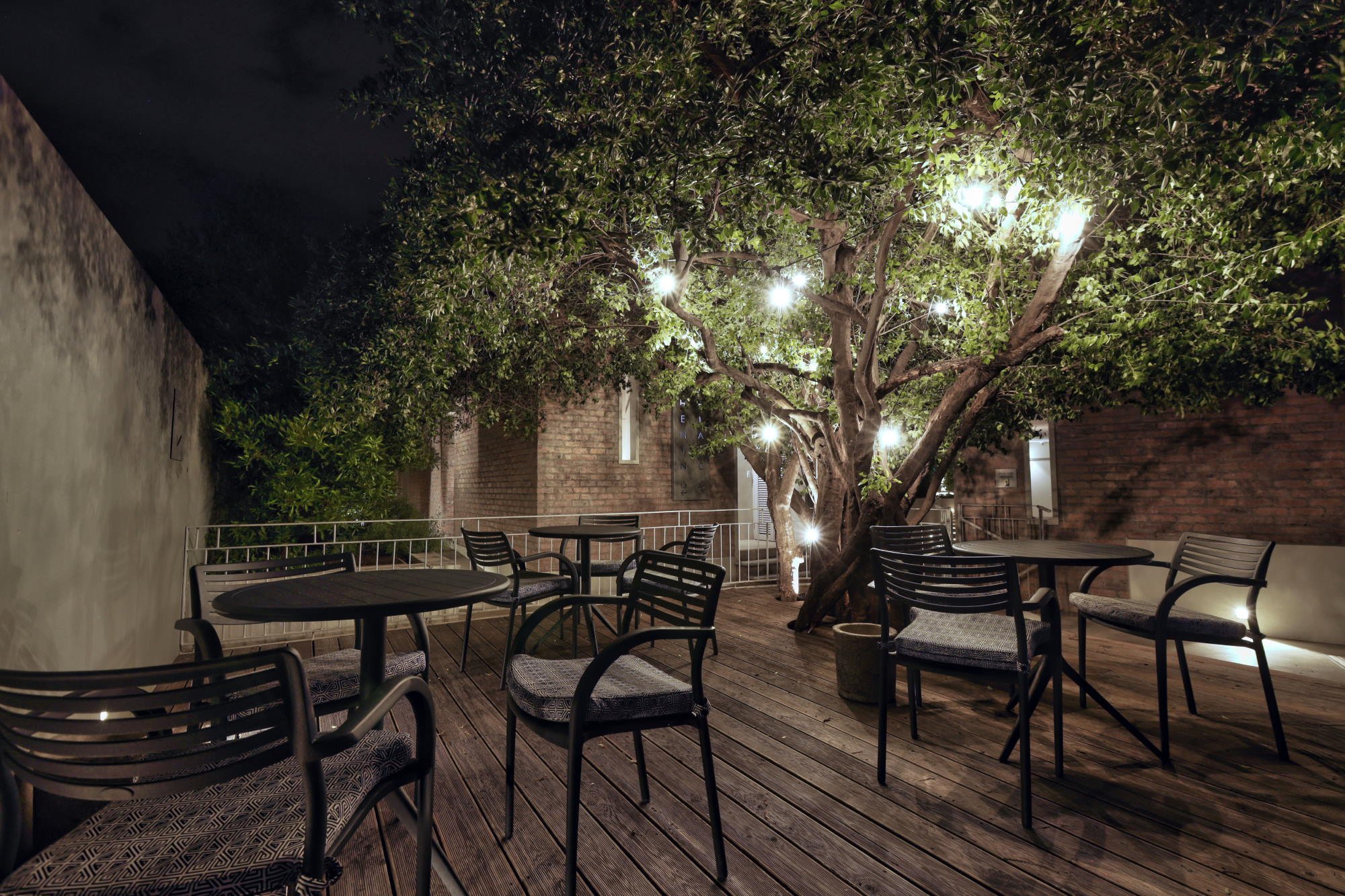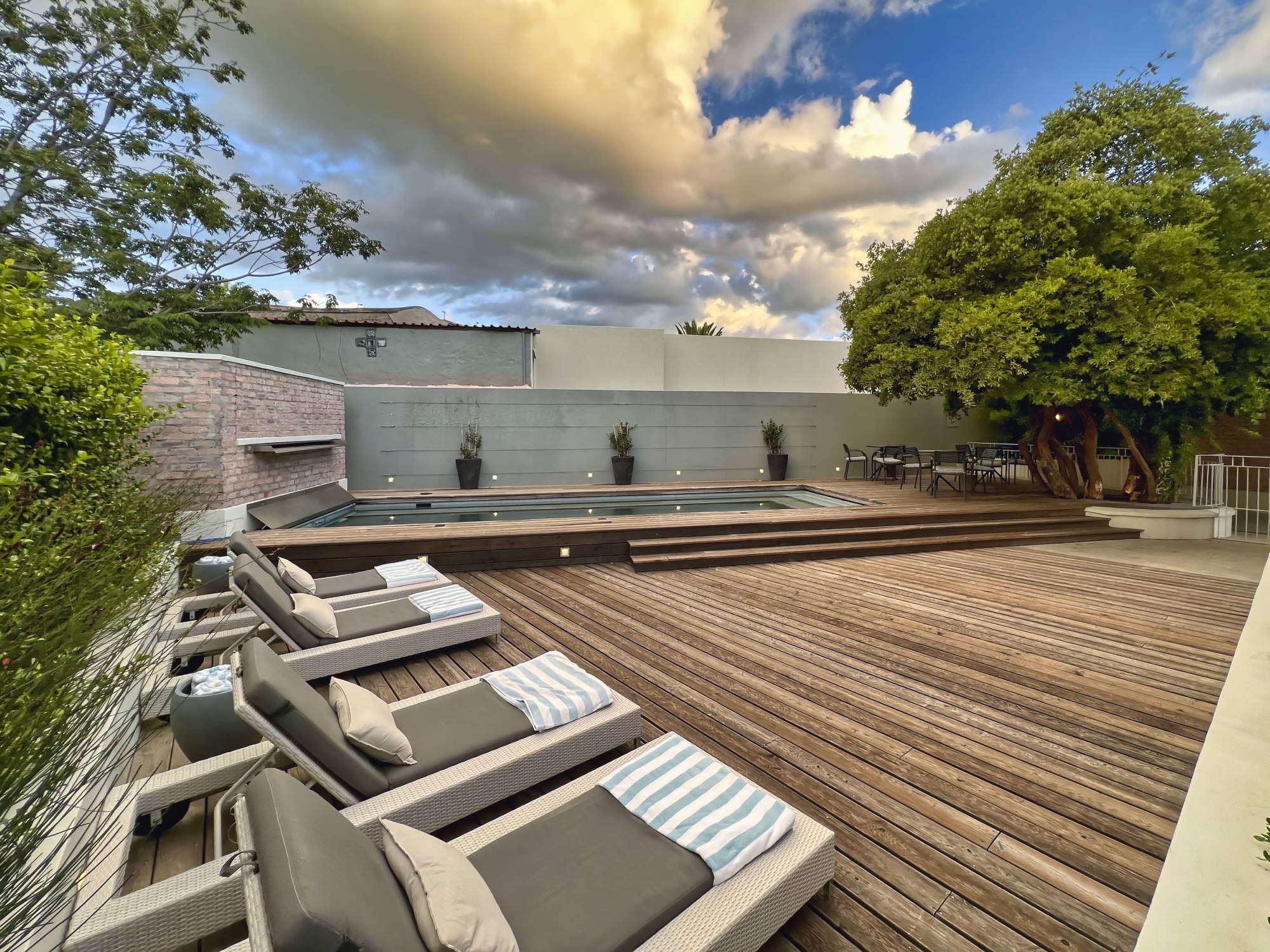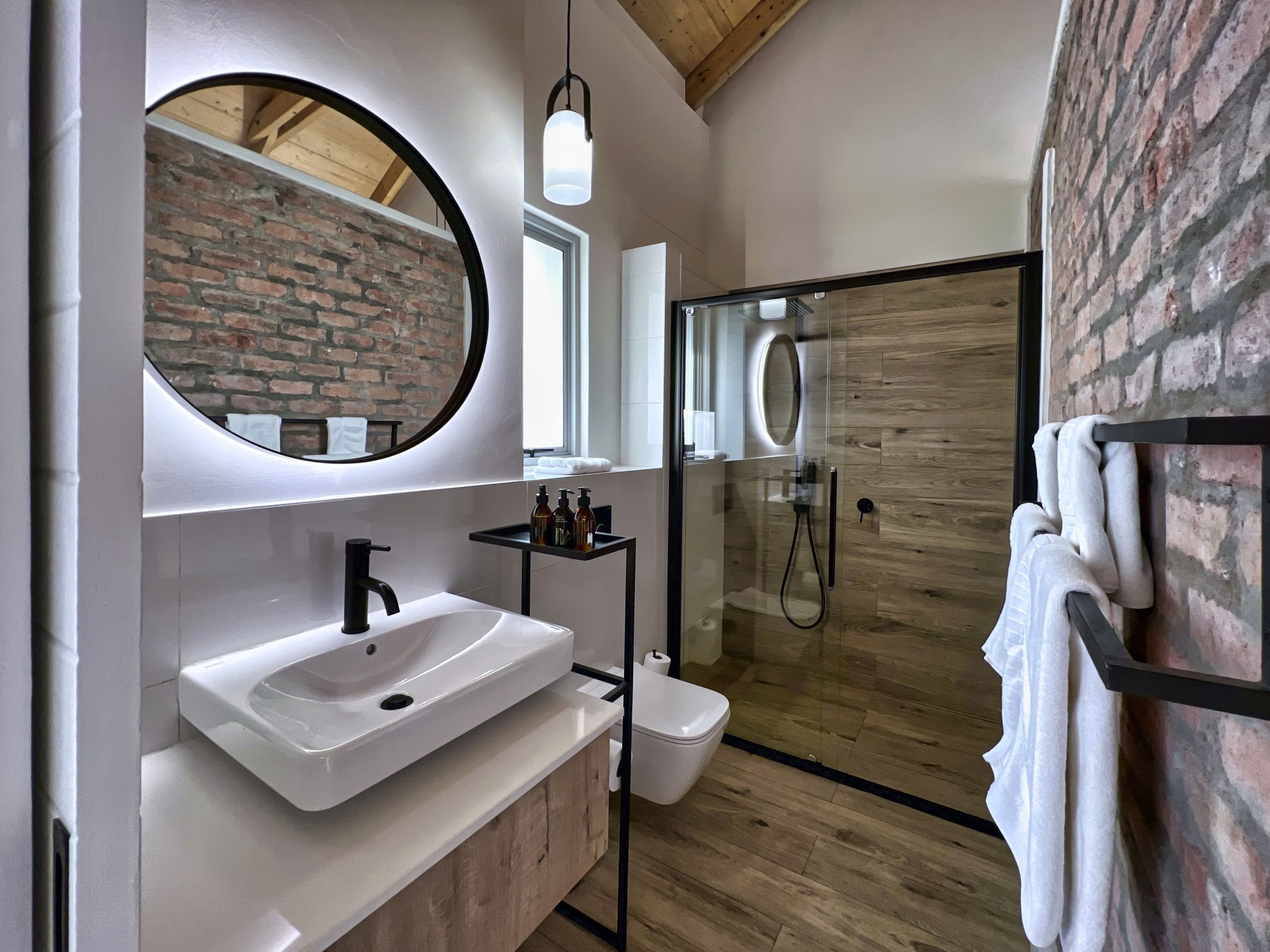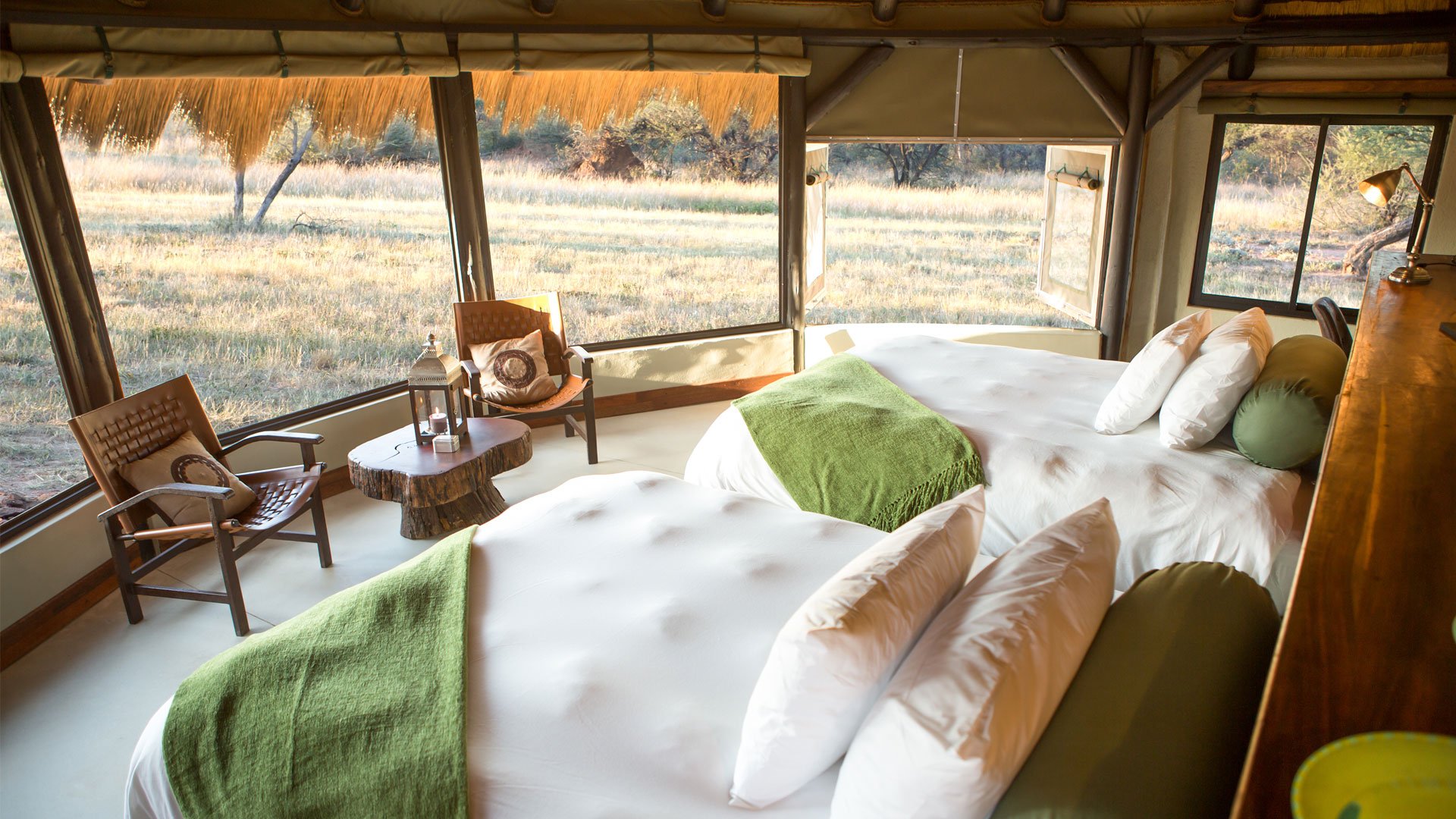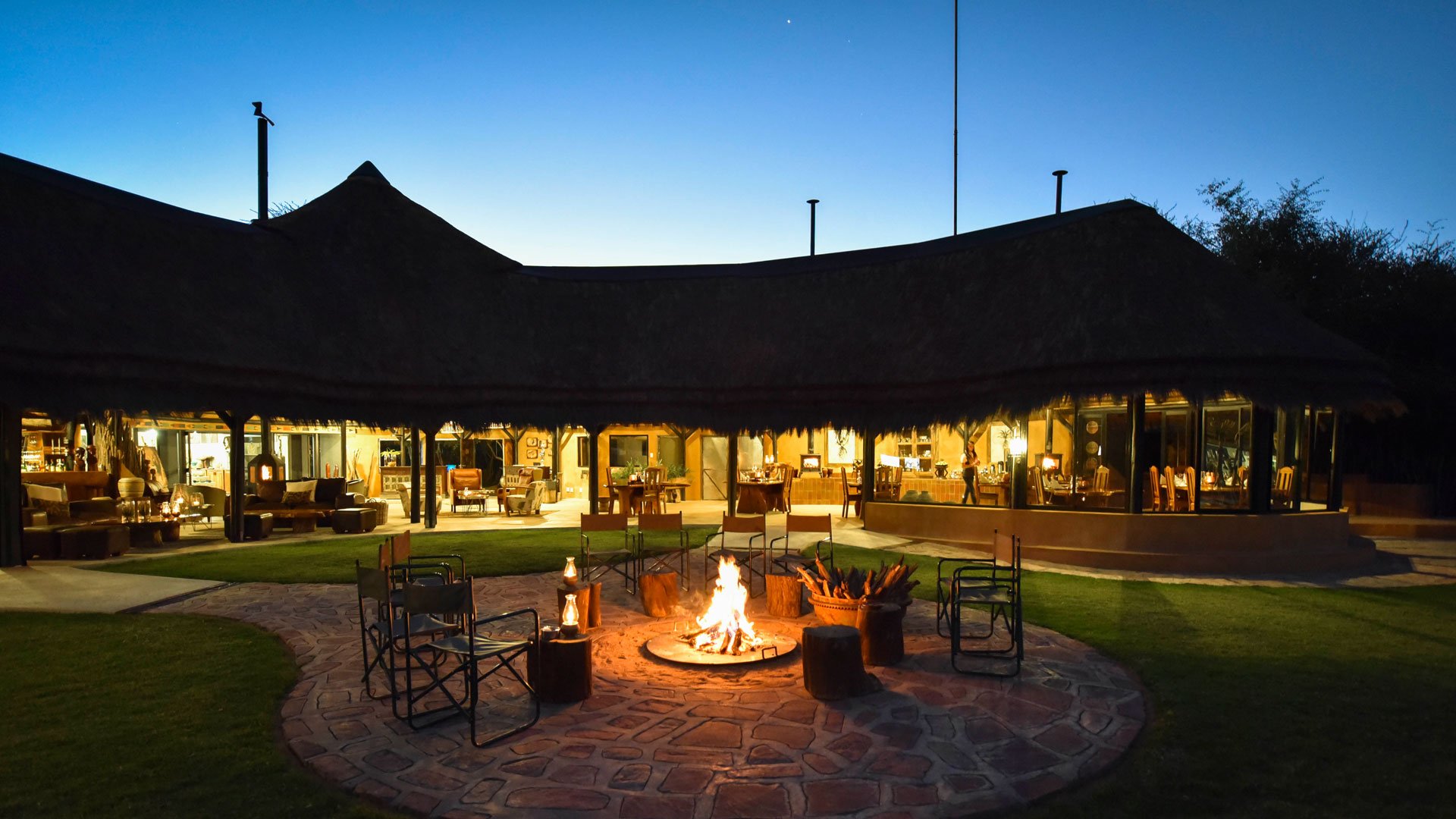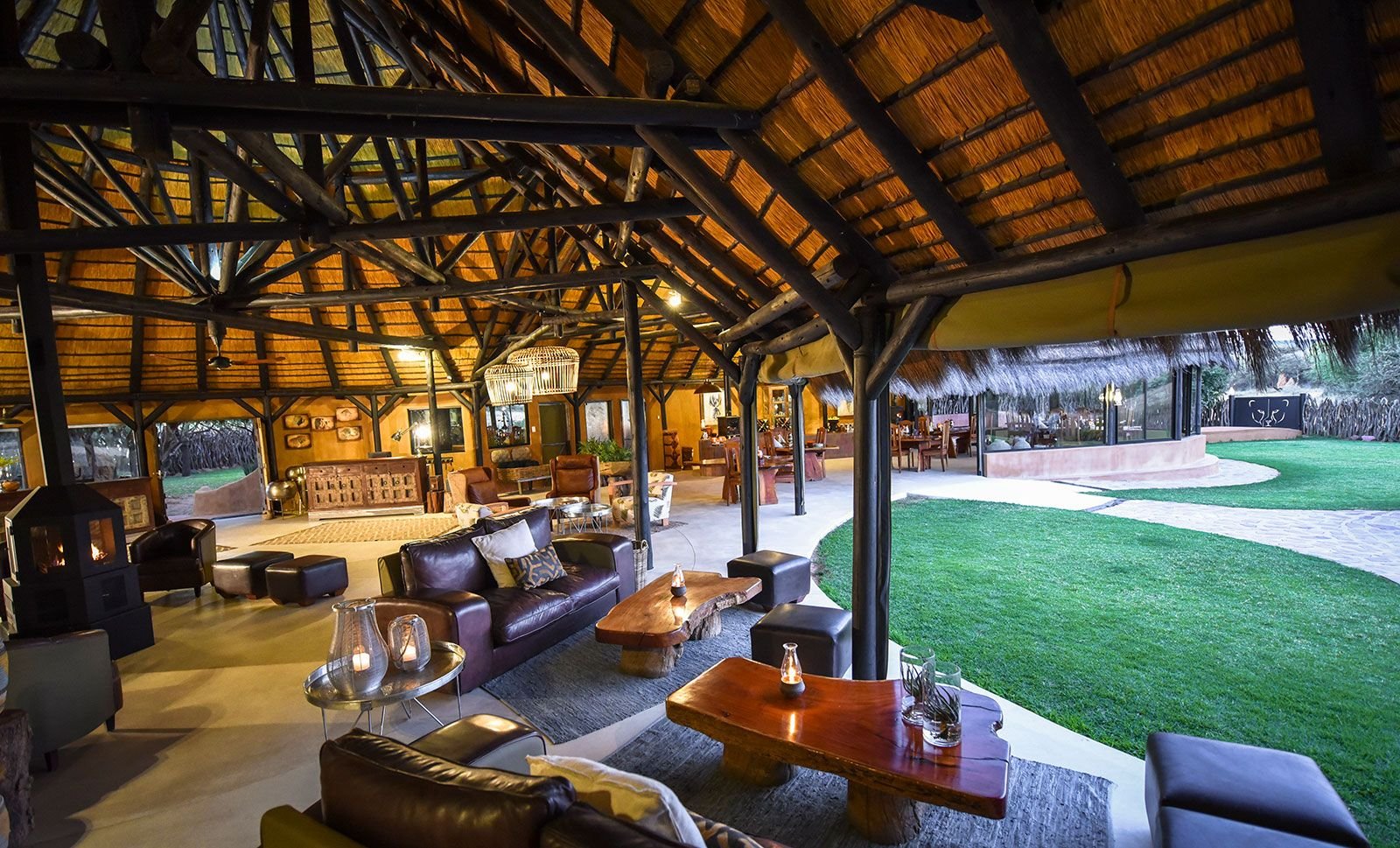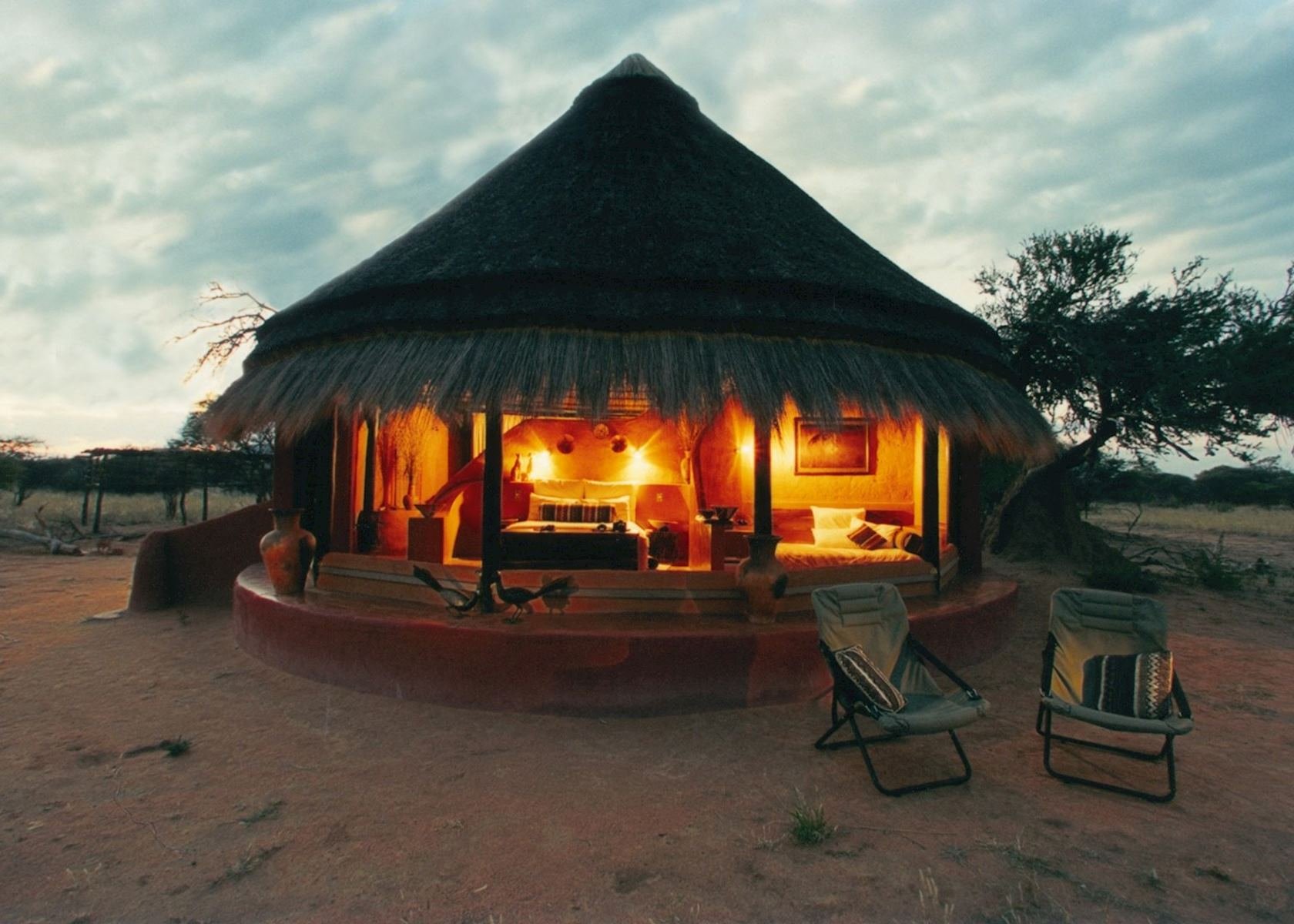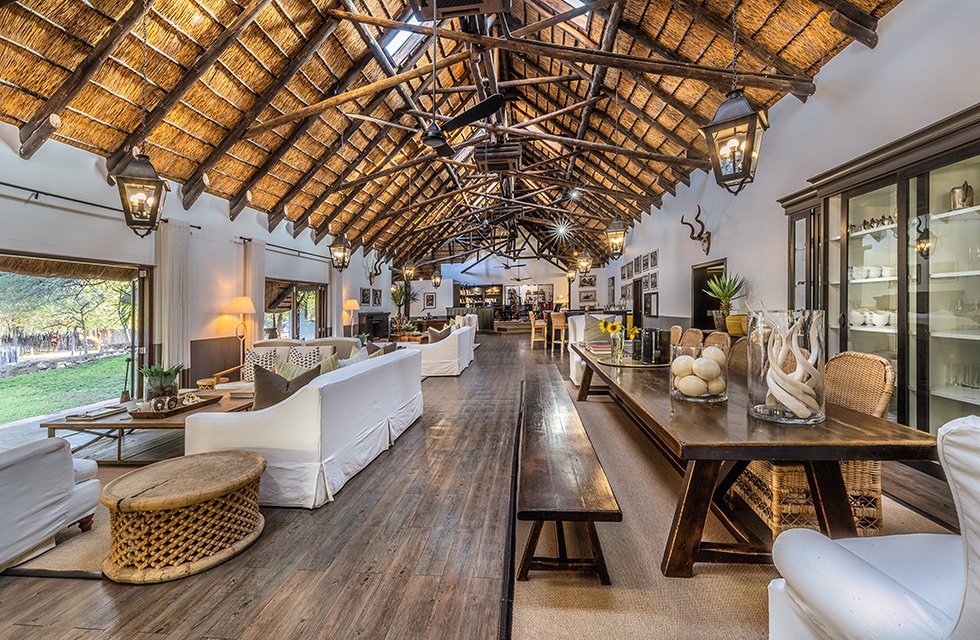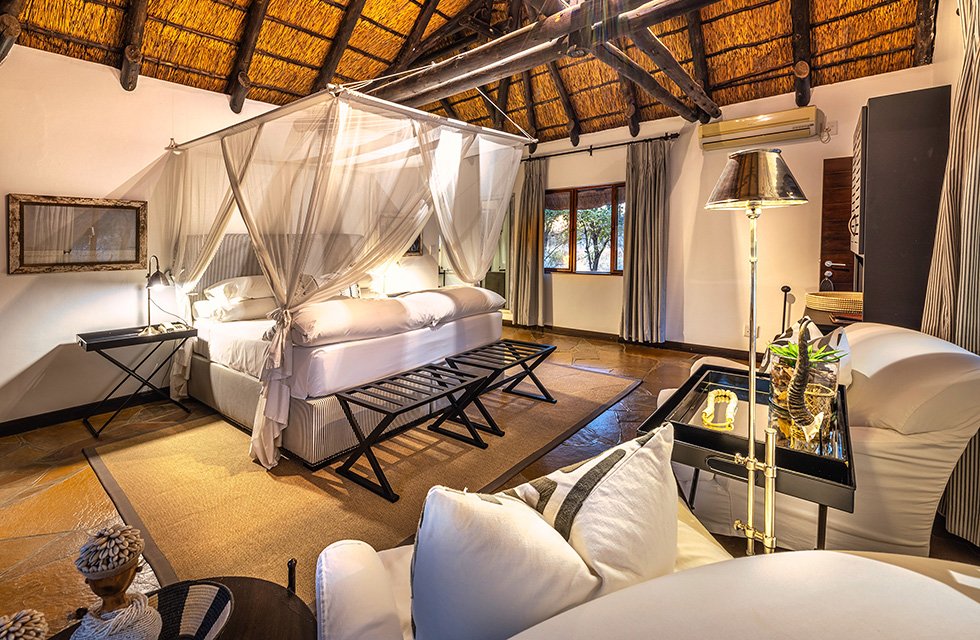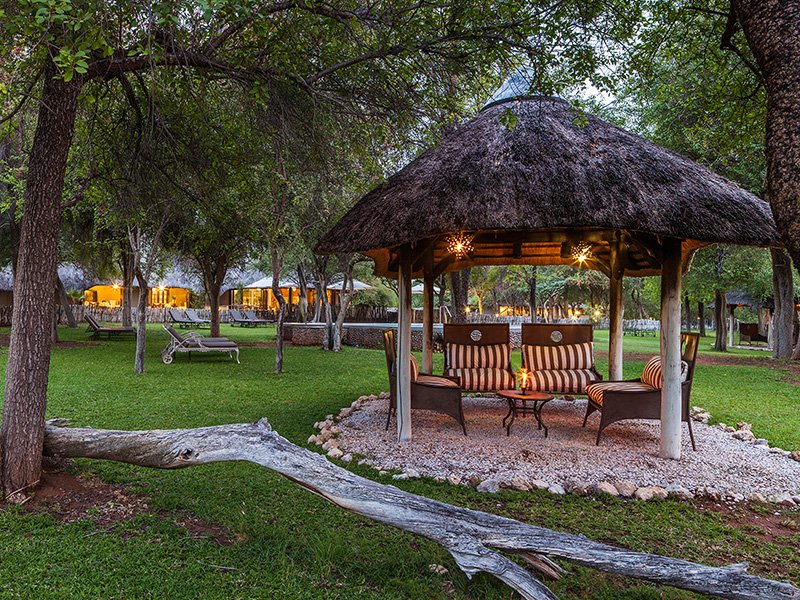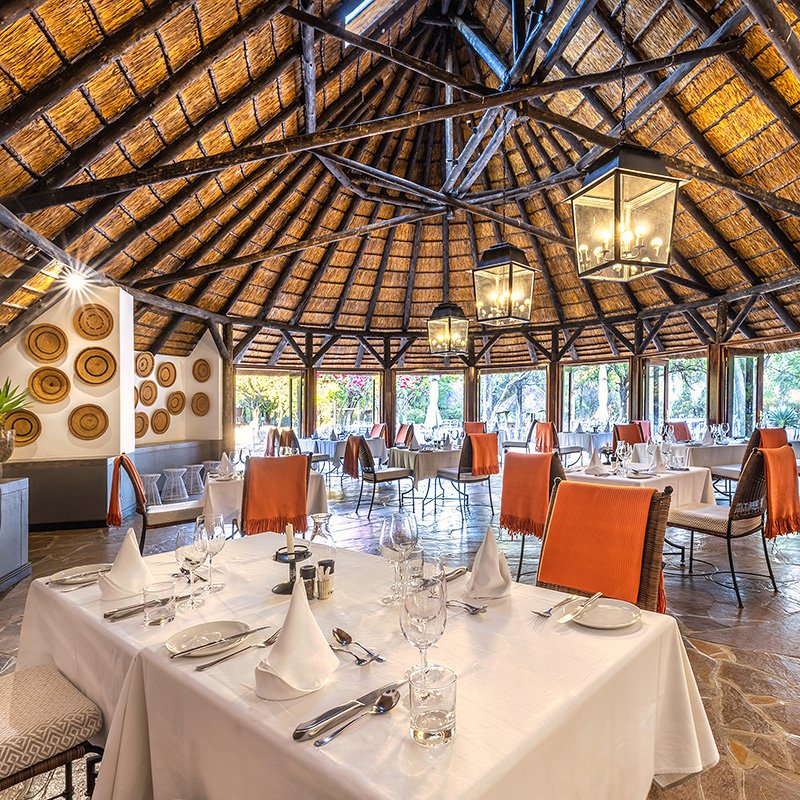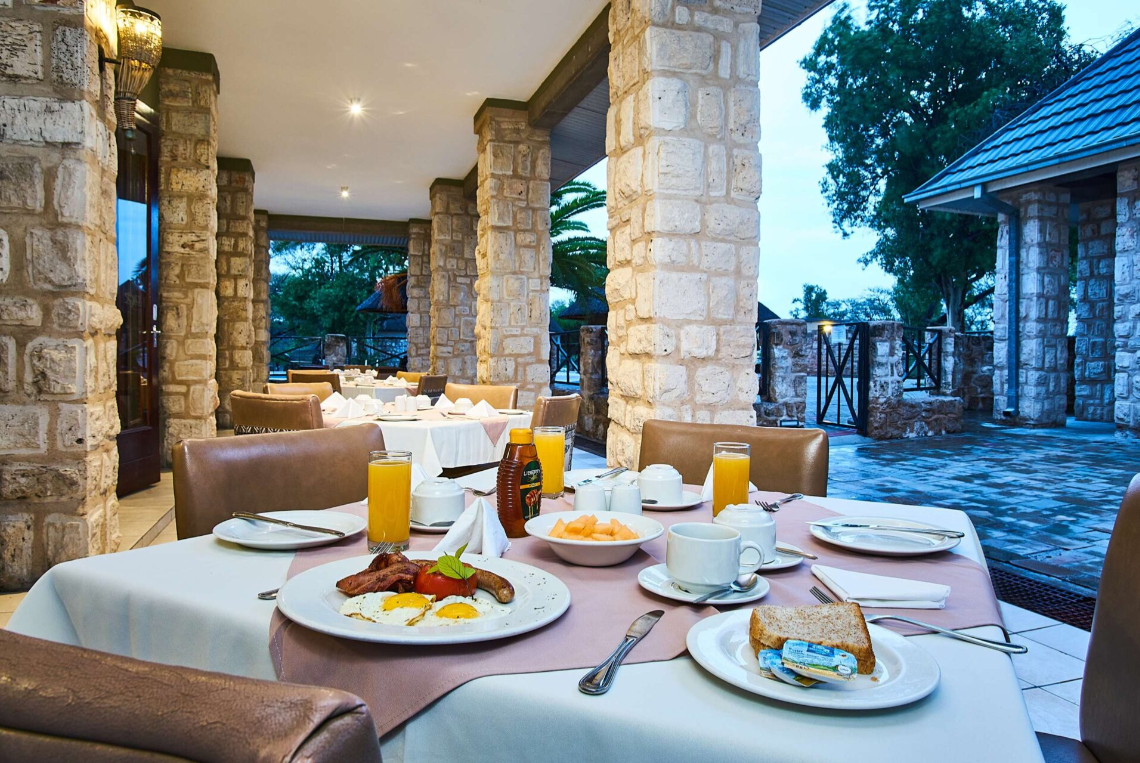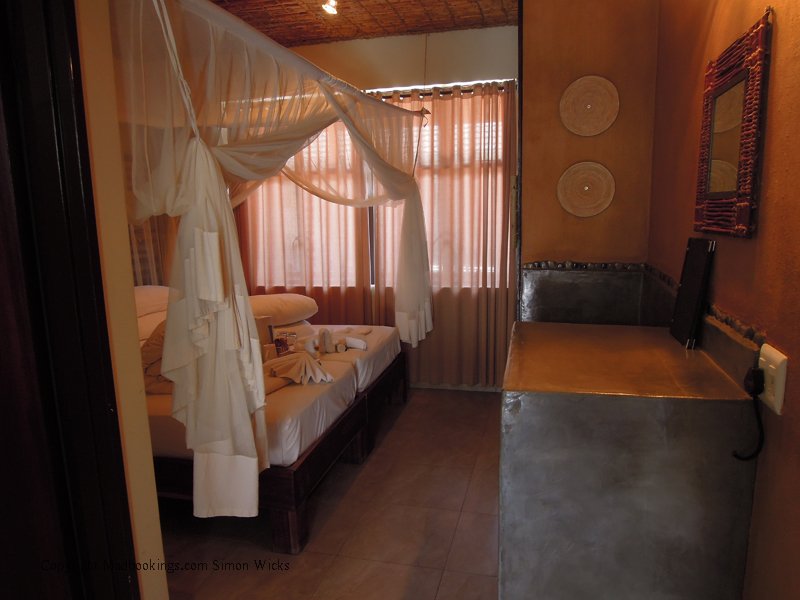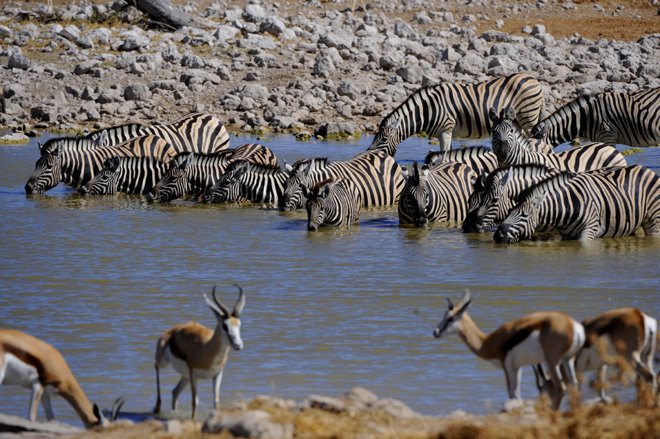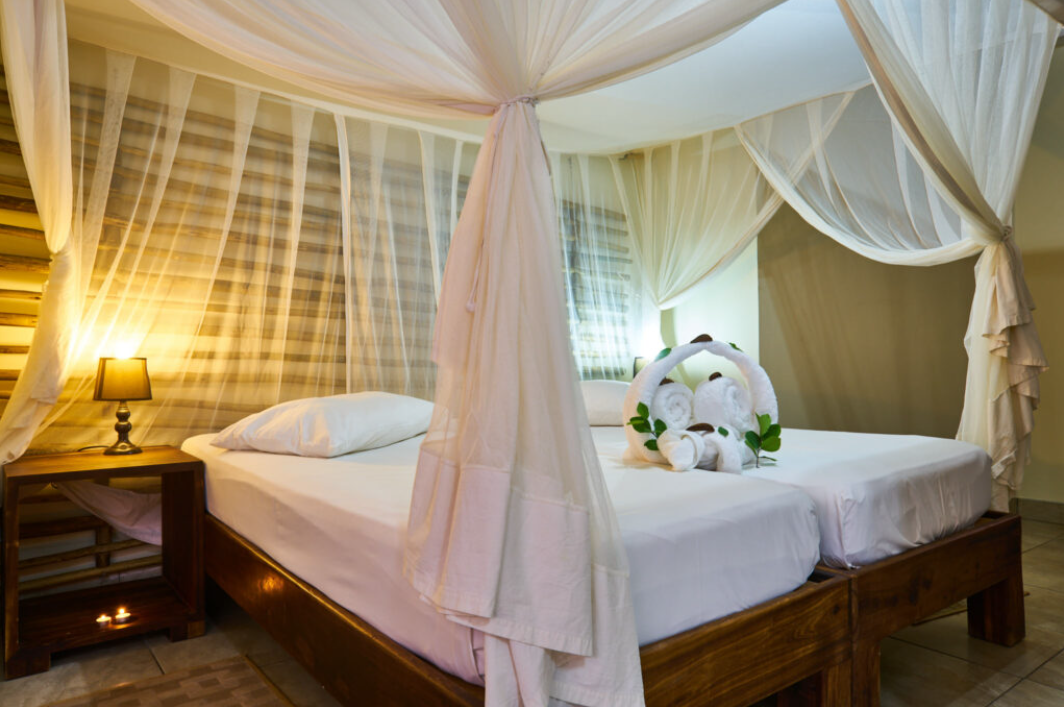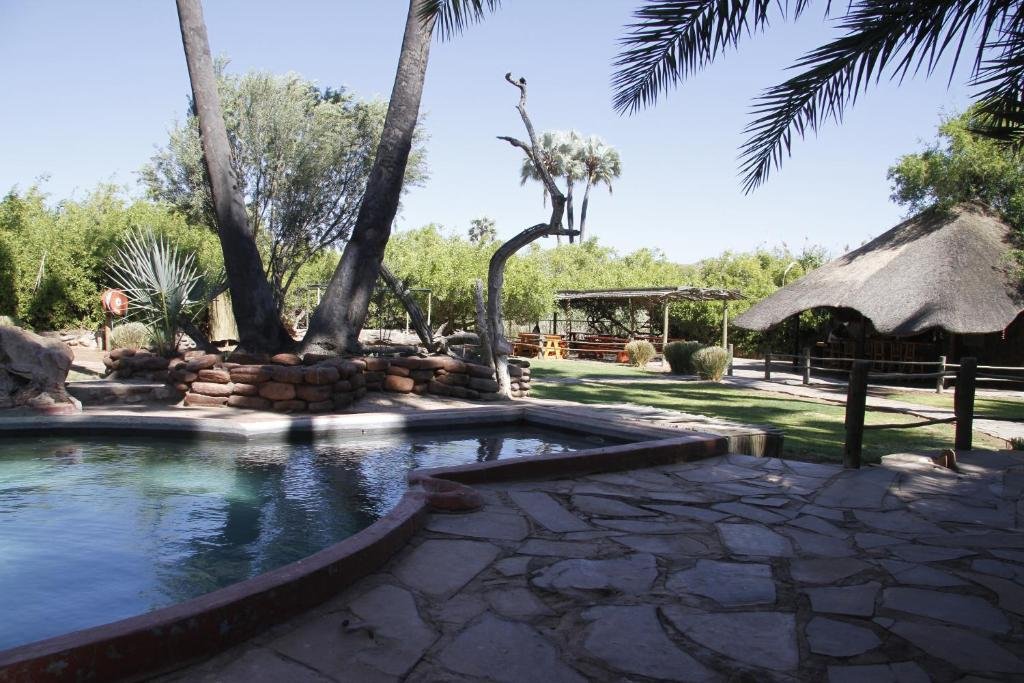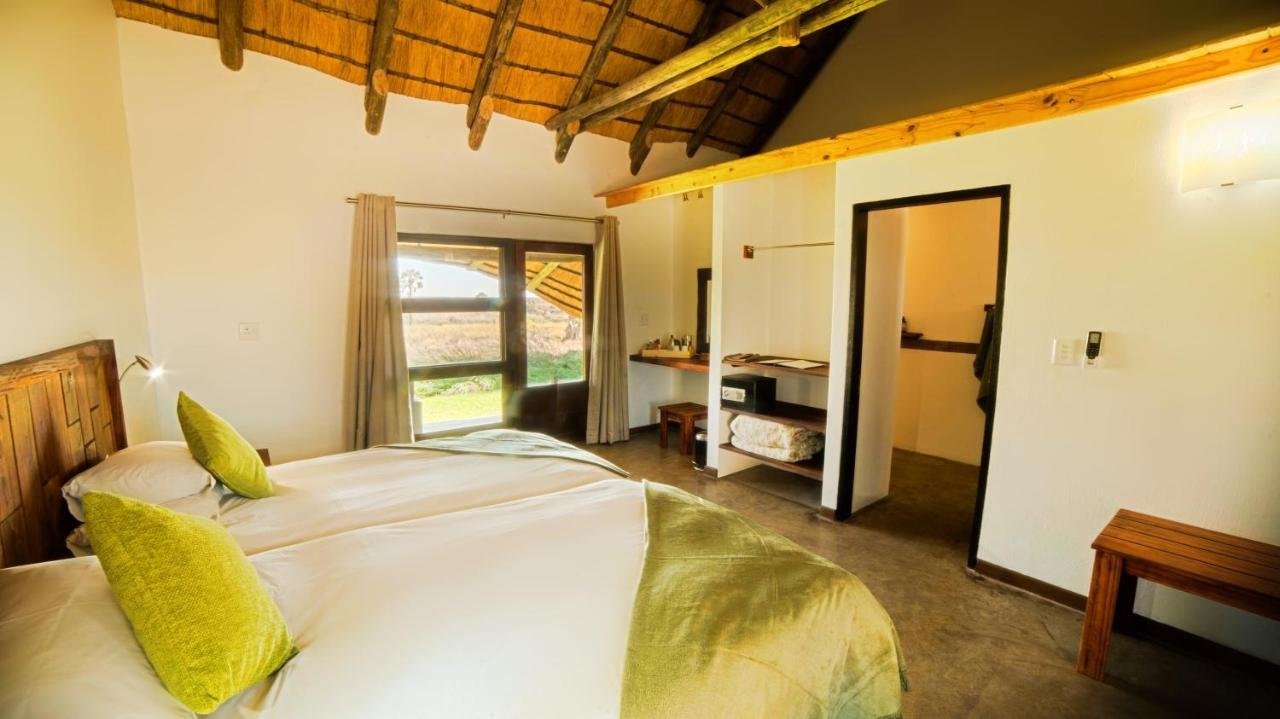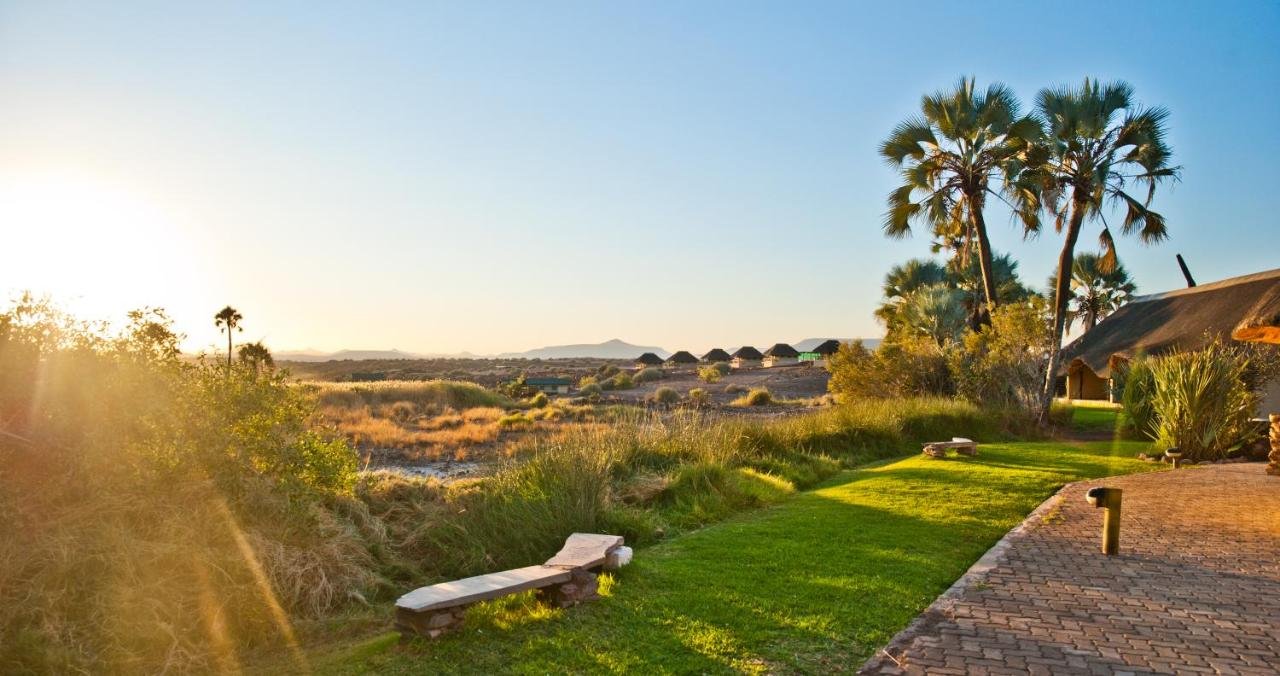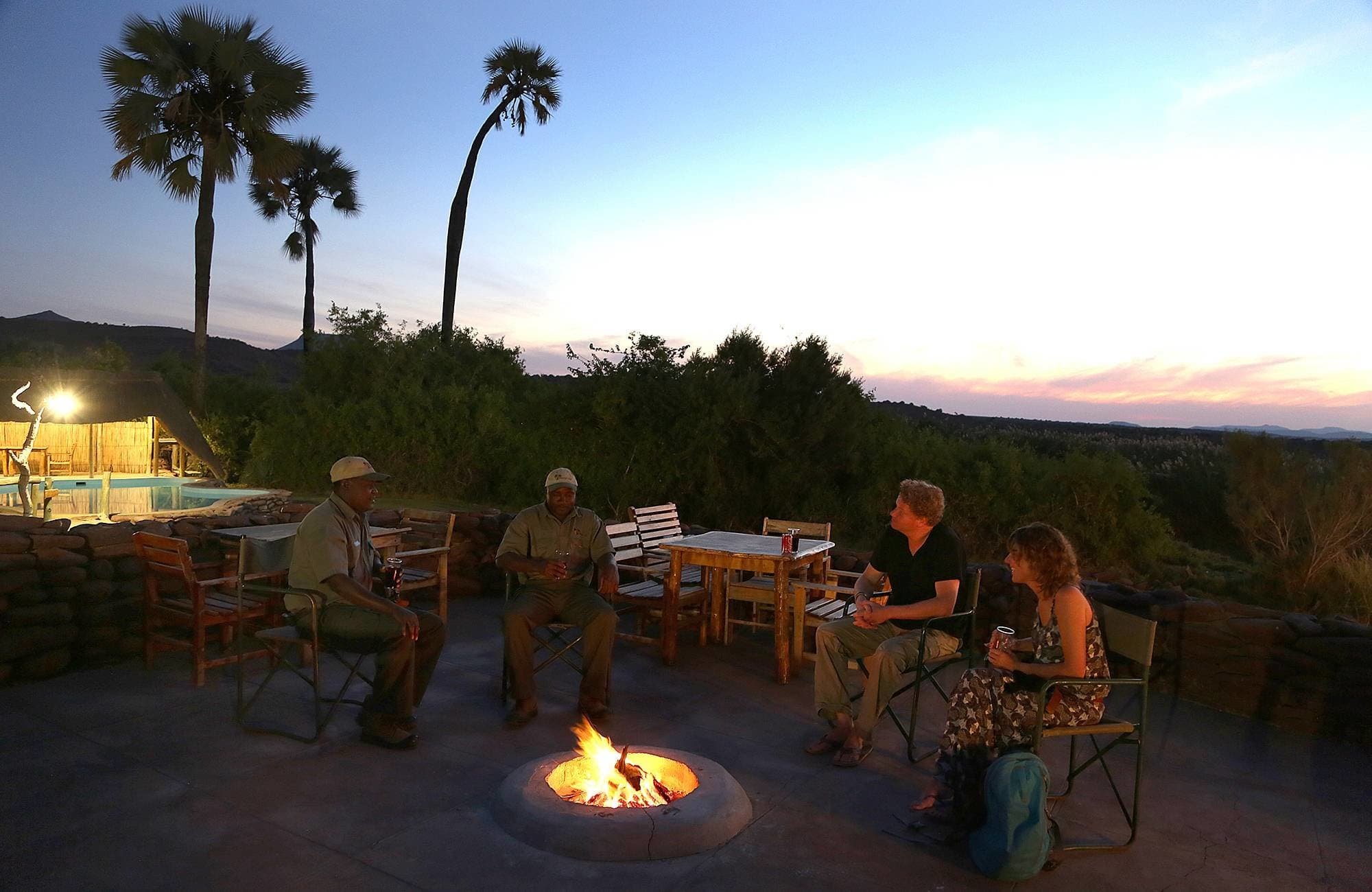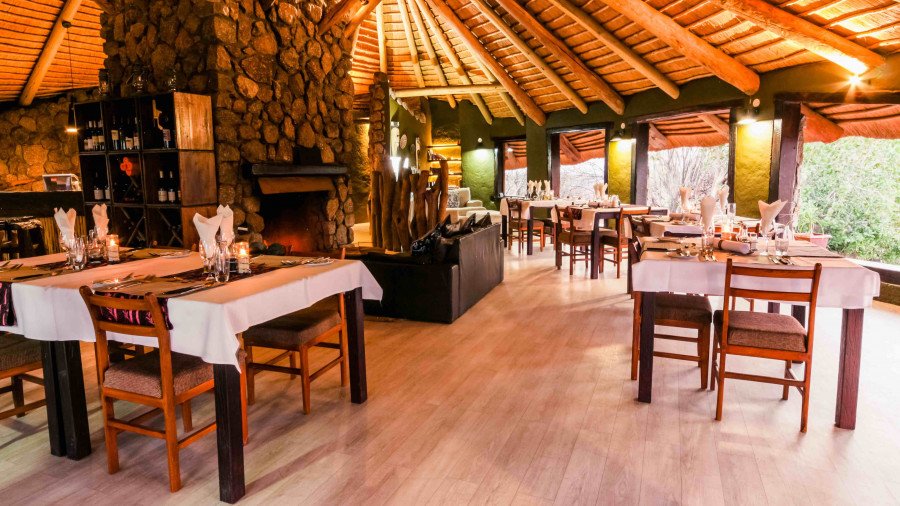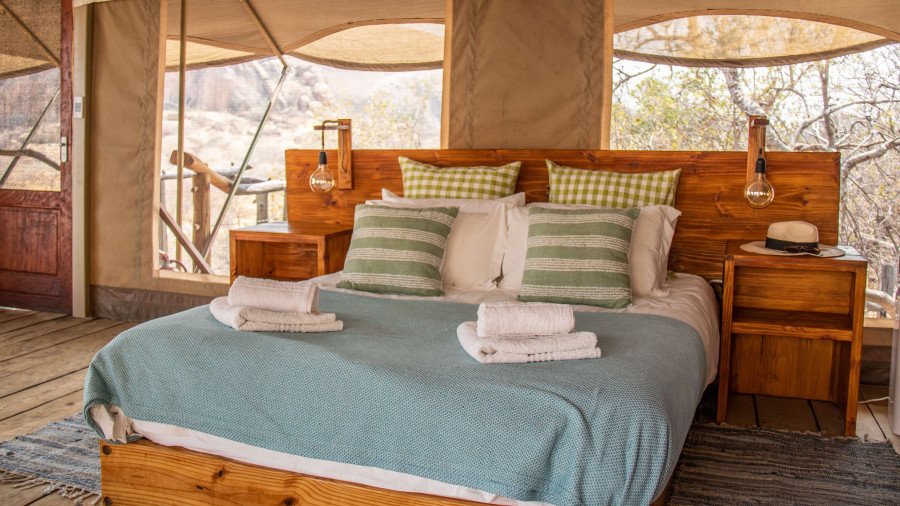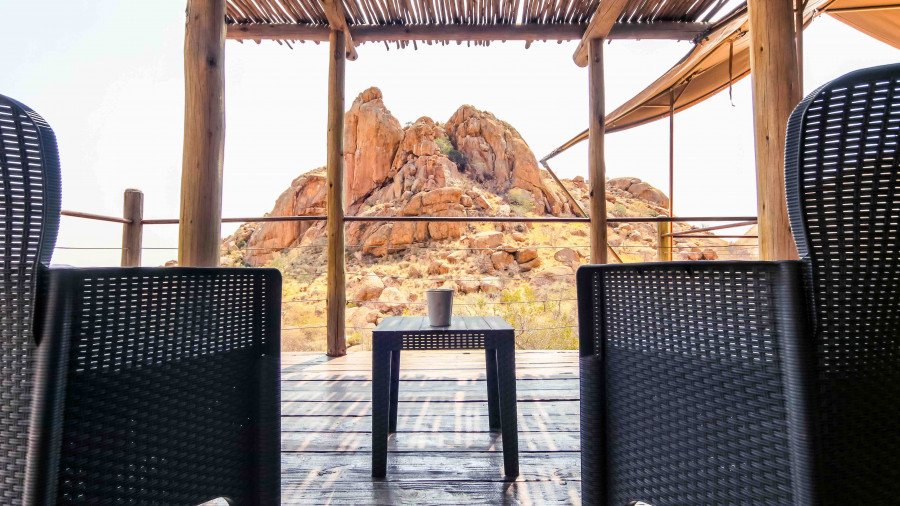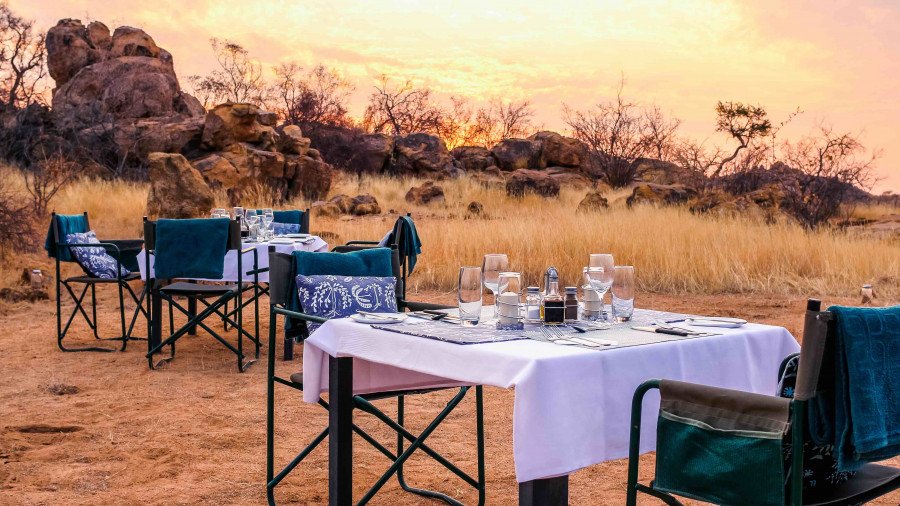Conservation Heroes - BIG CAT Learning and Safari in Namibia
Namibia
Big Cat Conservation Safari
To Benefit Felidae Conservation Fund
13 Days - 12 Nights
Experience Behind-the-scenes activities at AfriCat
Meet with the Namibian Lion Trust
Plus: Discover elephants, zebra, giraffes and more on your safari
in Etosha National Park
Comfortable vehicle; naturalist guide, all lodging and meals included
2024 DATES TO BE ANNOUNCED
Contact us to Get on the Priority Notice List
From $10,400 ex flights. $720 Single supplement
Post-tour extensions are available.
The cost includes a $1,000 tax-deductible donation to the
Felidae Conservation Fund
Why This Tour is Special
Cheetah scouting for its next meal. Etosha National Park, Namibia. Image: © Marc Cronje.
Conservation Heroes of Namibia. A chance to go behind the scenes with researchers and biologists from the AfriCat Foundation, dedicated to the long-term conservation of Namibia’s large carnivores in their natural habitat. Later, meet with a representative from the Namibian Lion Trust after trekking endangered black rhino on foot in Palmwag.
Cats x 5. The potential to see Namibia’s five wild cat species - lion, leopard, cheetah, caracal, and serval - in the wild.
Only 6 Guests. The group is limited to only 6 guests, making for an exclusive and intimate safari, providing time to interact with researchers and local guides; flexibility in the schedule to take advantage of serendipitous sightings; and a chance to make new friends within the group.
“The White Place.” Etosha roughly translates to “White Place.” The lime and salt of Etosha’s pans create a white shimmering landscape unlike any of Africa’s other great game reserves.
Impact. Your tour supports the Felidae Conservation Fund and important conservation organizations in Africa. An incredible journey that does good on two fronts.
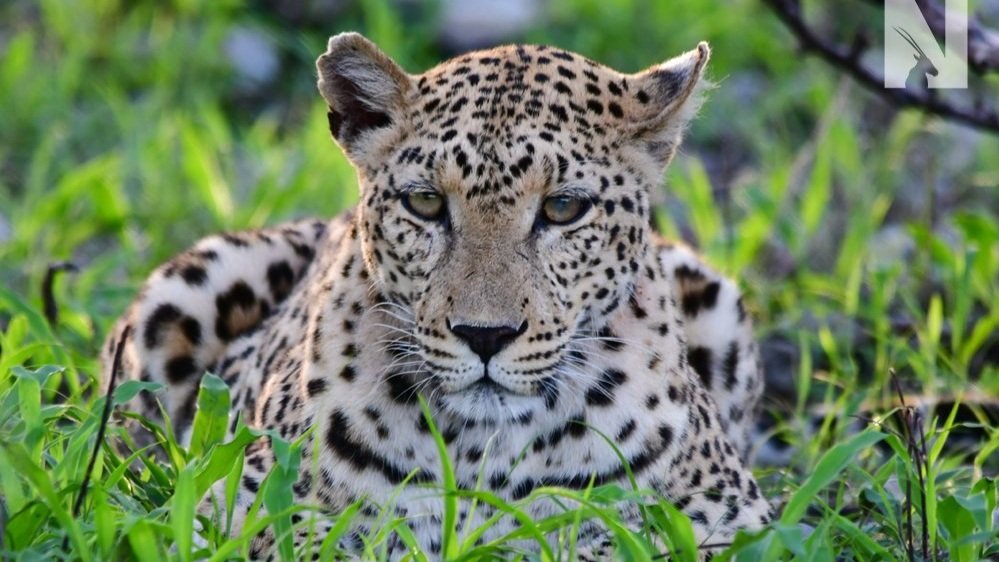
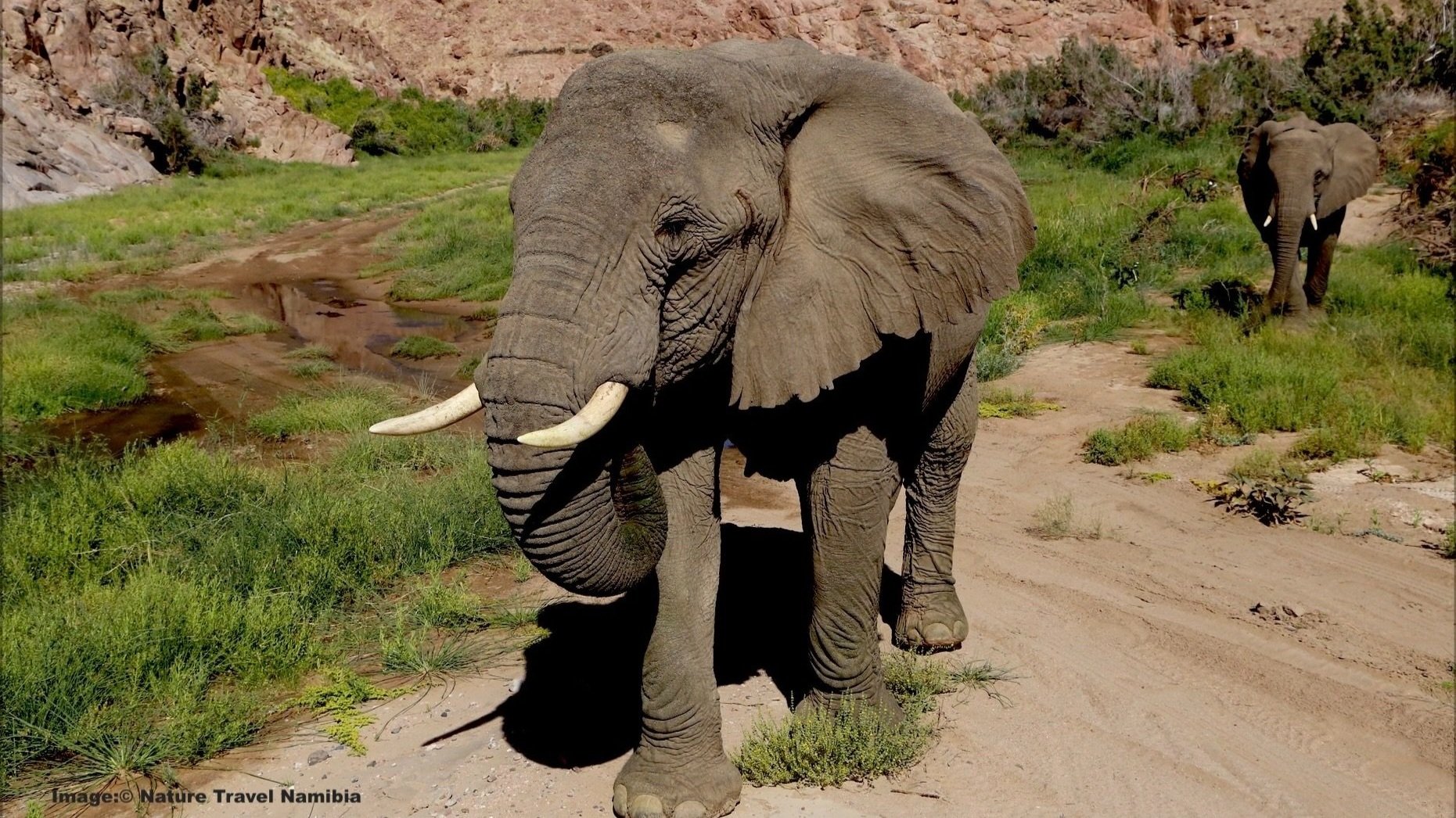
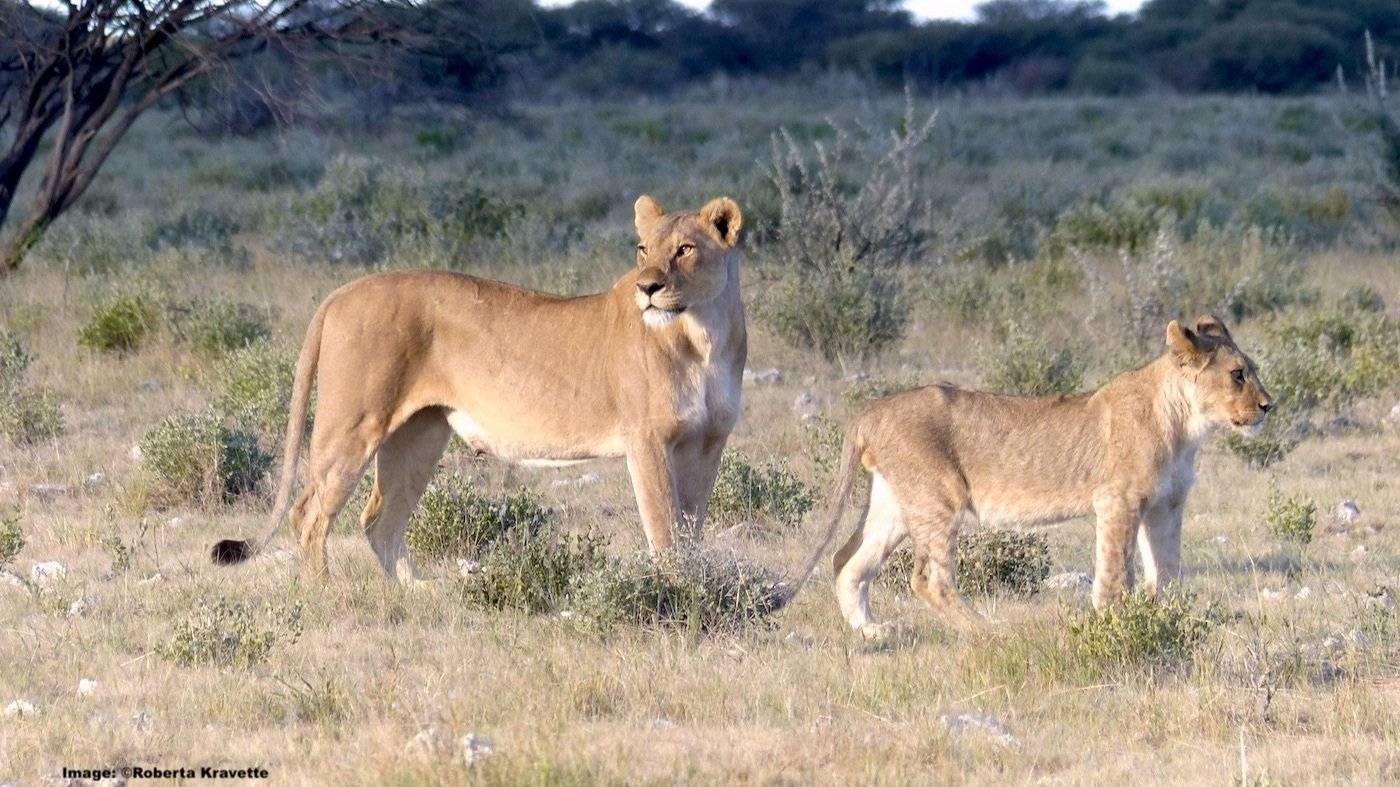
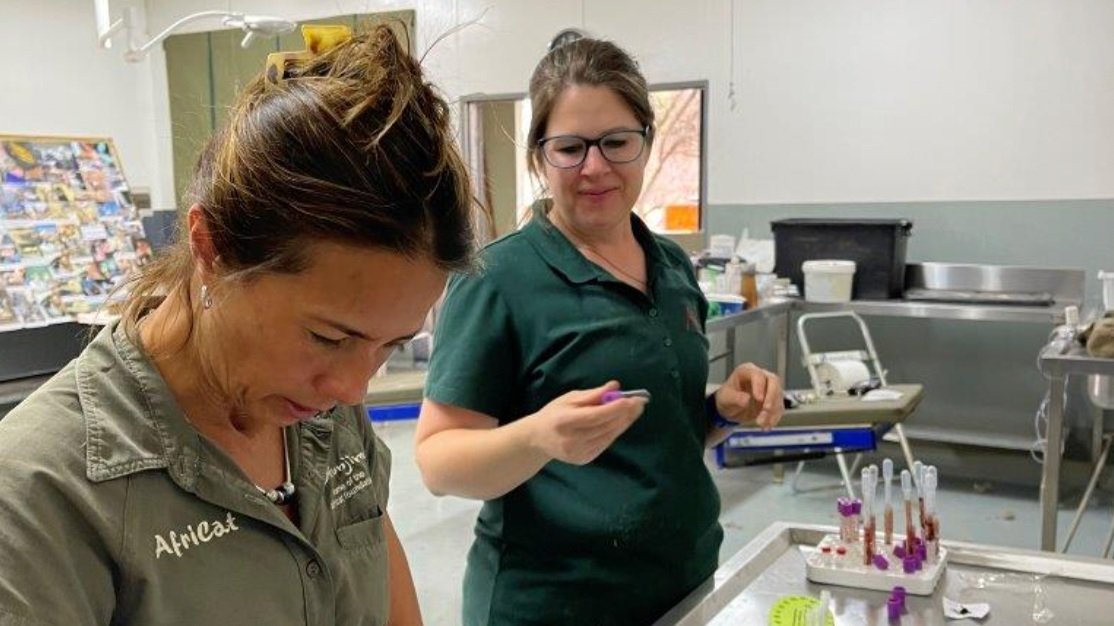
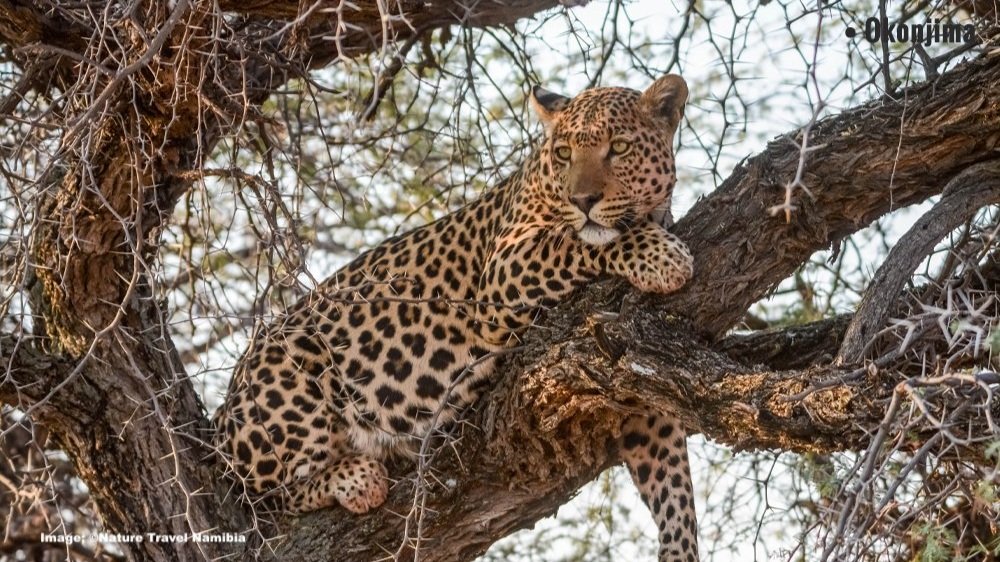
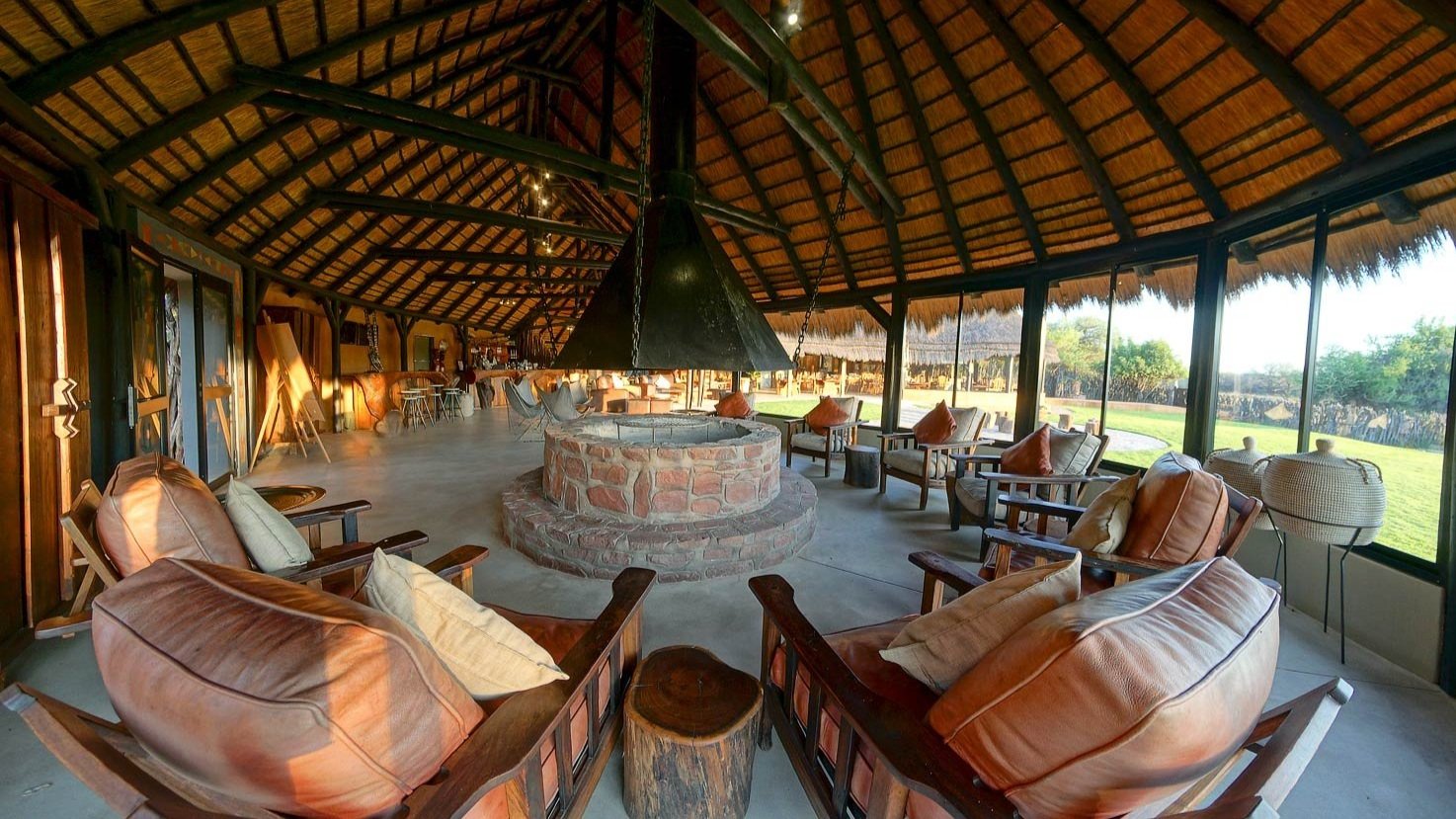
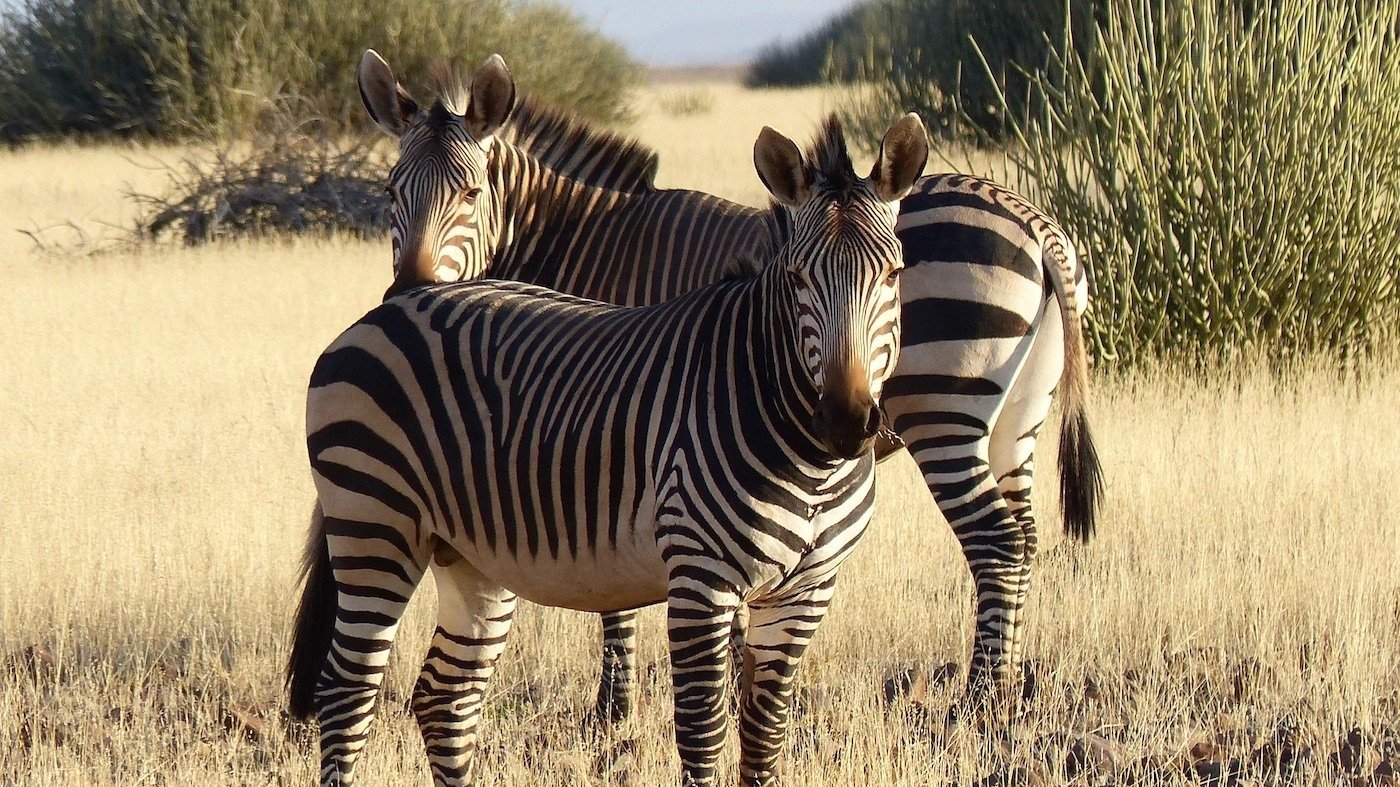

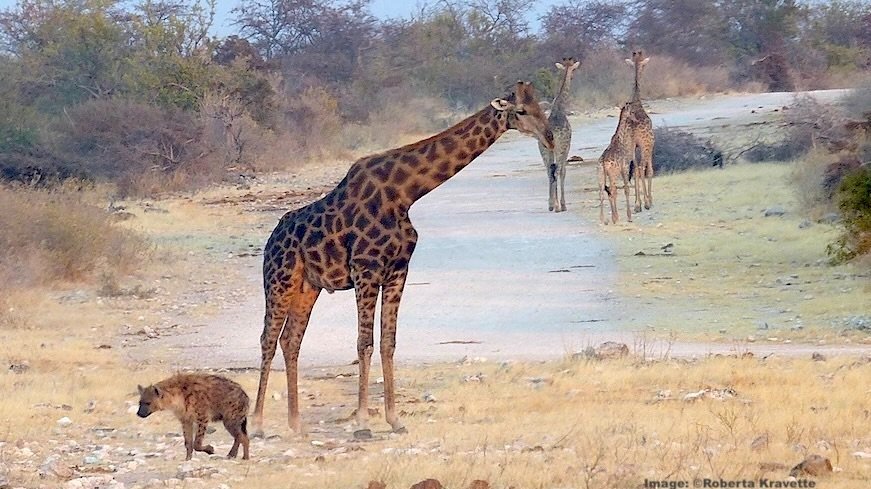
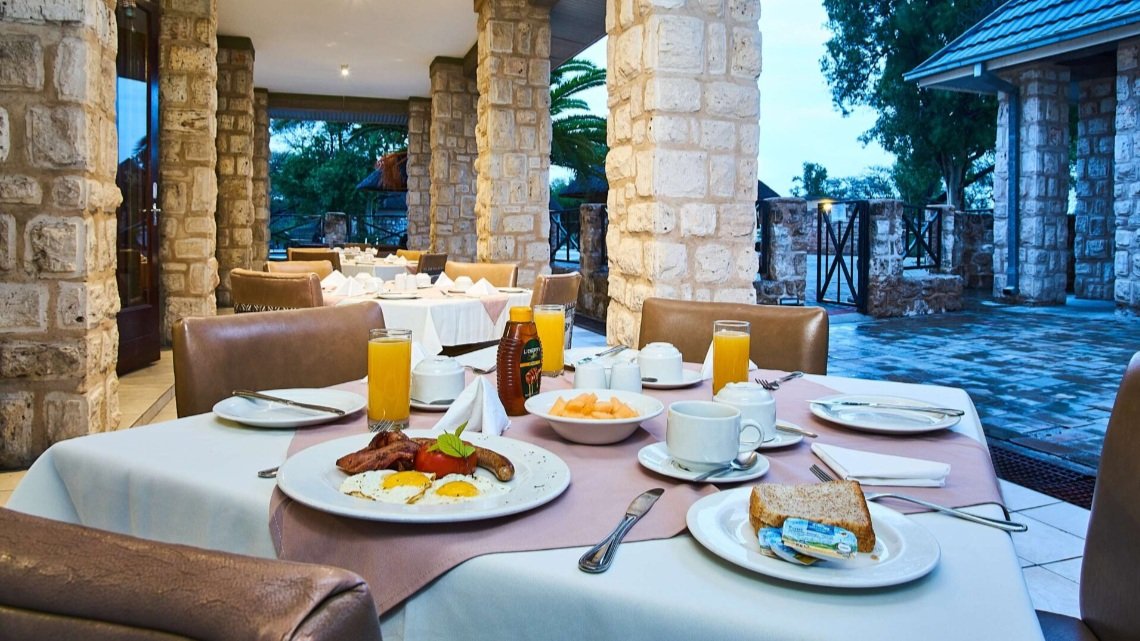
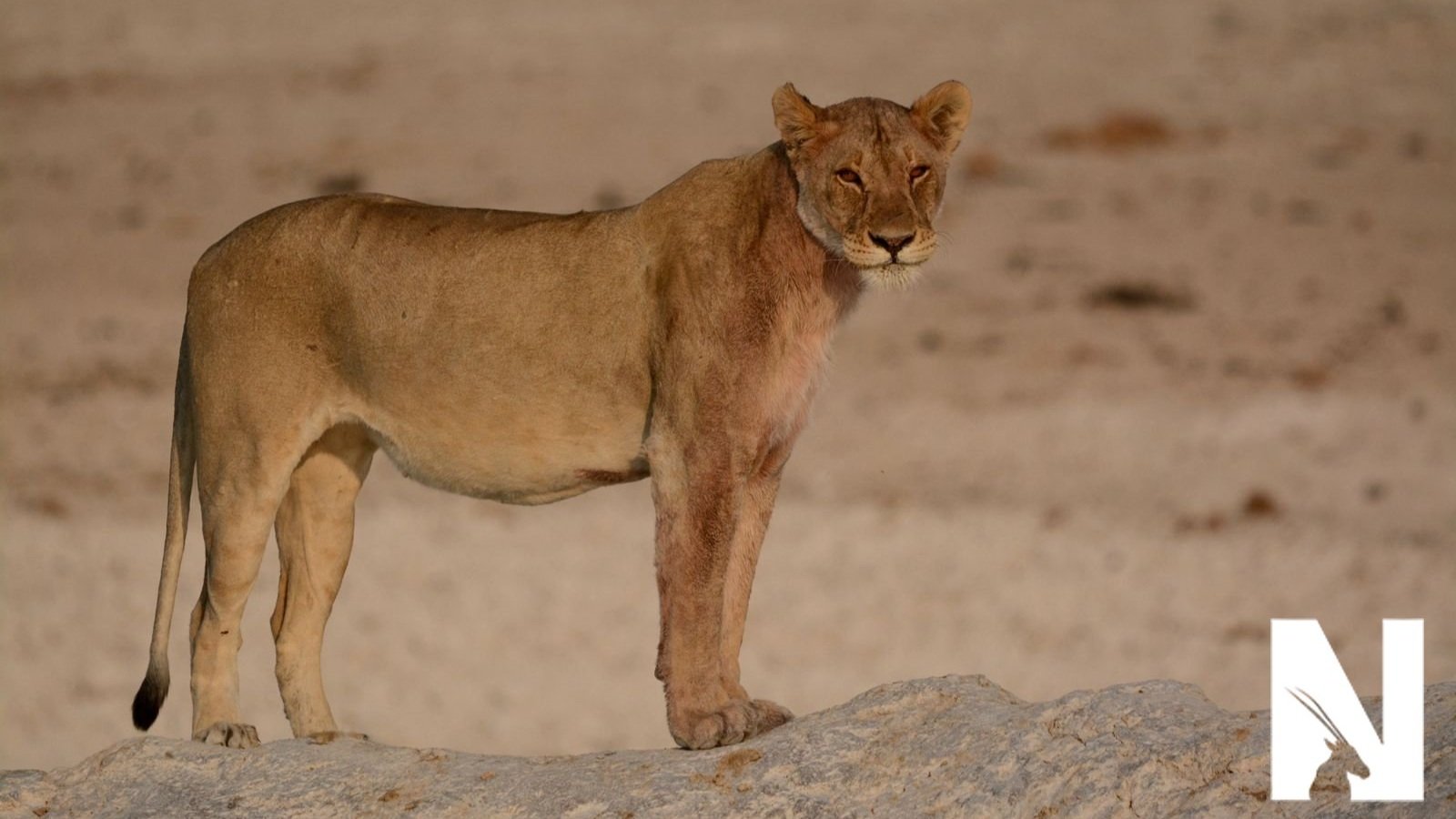
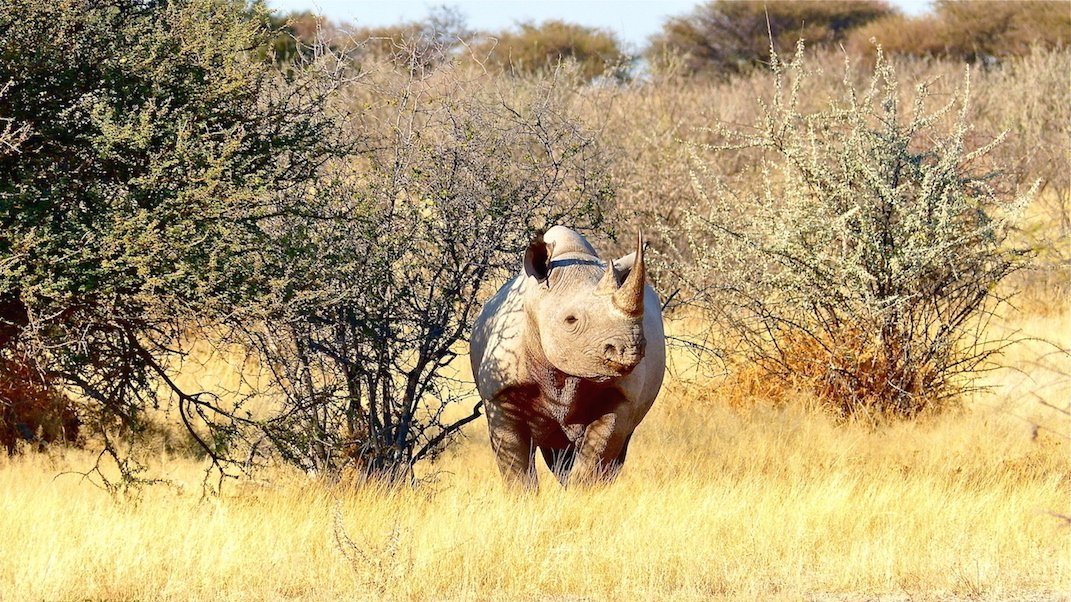
Detailed Itinerary
Detailed Itinerary
Day 1: Windhoek, Namibia
Welcome to Namibia! After arriving in Windhoek and clearing the border formalities, your guide will meet you at the airport. They will drive you to our Windhoek hotel for the first night. We will share an introductory dinner across the street from the hotel that evening. An early night is in order because our adventure starts tomorrow.
Overnight: The Windhoek Luxury Suites
Day 2: Okonjima Luxury Bush Camp, Okonjima Nature Reserve
Young Impala, inquisitive like all youngsters. Image: © Roberta Kravette
After meeting you at the Windhoek hotel, we will depart for Okonjima Bush Camp near Otjiwarongo in central Namibia, where we will spend our first evening in the bush.
On arrival, we will enjoy lunch and have time to settle in and freshen up before departing for the afternoon activity, which will be Leopard tracking with the lodge. During our game drive, we will be on the lookout for Leopard but could also spot Kirk's Dik dik, Common Eland, Hartebeest (caama subspecies), White Rhinoceros, Mountain Zebra (hartmannae subspecies), Common Rock Hyrax, Gemsbok, Yellow Mongoose, Greater Kudu, Giraffe, and Springbok. Some of the carnivores are fitted with a radio collar, which contributes valuable information to the research project and gives us a chance to get a glimpse into the lives of these rarely-seen cats.
We will enjoy a sundowner drink in the bush before returning to the lodge in time to relax around the fire before dinner. We will enjoy a wonderful dinner prepared by the lodge staff. This will be the perfect Namibian welcome and should set the tone for the rest of the safari.
After dinner, we will do a night drive where we could spot possible species like Honey Badger, Cape Porcupine, Brown and Spotted Hyena, Southern Lesser Galago, Southern African Spring-hare, Aardvark, Temminck's Ground Pangolin, Black-backed Jackal and Caracal.
Overnight: Okonjima Luxury Bush Camp
Day 3 & 4: AfriCat, Okonjima Luxury Bush Camp, Okonjima Nature Reserve
During the next two days, we will be joining some exciting behind-the-scenes and possible hands-on activities with researchers and biologists from AfriCat and will partake in the following activities:
Aardvark. Image courtesy AfriCat.
Briefing about the program
Behind-the-scenes tour of the AfriCat Centre
Tracking game drives with the Leopard and Hyaena Researchers, where they will give us a full briefing on the current studies they are part of
Monitor sample collection
Receive background information on how each process works
Carnivore release
Park drive with background information on trap construction
Guided Game Drives
Guided Bush Walks
Bush dinners and Sundowner activities
Overnight: Okonjima Luxury Bush Camp
Day 5: Mushara Lodge, Etosha East
This morning we enjoy our final activity at Okonjima and make our way to our next destination, Etosha National Park.
We should arrive at our beautiful lodge by mid-afternoon. If we arrive in time, we will depart for a short afternoon game drive in the park. Early evening, we will meet up for a sundowner drink and then enjoy dinner at our lodge.
Overnight: Mushara Lodge
Day 6: Mushara Lodge, Etosha East
Leopard making it clear whose the top cop on this road. Image courtesy Nature Travel Namibia
Today will be dedicated to exploring the eastern section of the vast Etosha National Park. From a mammal point of view we will search for the endemic Kirk’s Dikdik (a Namibian endemic subspecies), African Elephant (IUCN: Vulnerable), African Lion (IUCN: Vulnerable), Black Rhinoceros (IUCN: Critically Endangered), (decreasing) Giraffe, (decreasing) Spotted Hyena, (IUCN Vulnerable) Leopard, Black-backed Jackal, (IUCN: Vulnerable) Black-faced Impala - another endemic subspecies, Hartebeest (Red subspecies), Gemsbok (Namibia’s national animal), Greater Kudu and Springbok. This part of Etosha is our best chance to see (IUCN: VUlnerable) Cheetah, and we will visit all our known hotspots to see them.
There is a fascinating known interaction between Honey Badgers and Pale Chanting Goshawks where the Goshawk will follow the Badgers, hoping that when they dig out prey, some escape offering them an easy meal. We often see this in Etosha, and we will hopefully be lucky on this trip.
After lunch, we will spend the afternoon visiting various waterholes to see if we can spot some of our target list mammals drinking. We might be lucky to get a herd of elephants drinking at Groot Okevi or Tsumcor waterhole, and we hope to see Common Eland at Chudop or Klein Namutoni. This waterhole is the perfect last stop in the park, with the setting sun behind us offering incredible photographic opportunities.
After arrival at our lodge, we will freshen up, meet up for sundowner drinks, and enjoy another Namibia dinner in the African bush.
Overnight: Mushara Lodge
Day 7: Okaukuejo Resort, Etosha South
Gemsbok, AKA Orex. Arguably the most beautiful of all antelope in Namibia. Image: © Roberta Kravette
Today we make our way to the central section of the park with a full day of game viewing. We will stop at two waterholes where we often find Spotted Hyena drinking early morning, and we often have lions walking across the open plains returning from their hunt. Although Etosha is famous for and probably the best place to see Black Rhino, we will visit an area where we have a chance to see (IUNC: Near Threatened) Southern White Rhinoceros and our only chance on this safari.
We will stop for lunch at Halali Resort, giving us a chance for a short break and a quick visit to the camp waterhole.
By mid to late afternoon, we will arrive at Okaukuejo resort, famous for its flood-lit waterhole at the edge of the camp, which offers fantastic game viewing with African Elephant, Black Rhinoceros, and Giraffe visiting on most nights, and Lion seen often. In the area around Okaukuejo, we will be on the lookout for (IUNC: Near Threatened) Brown and Spotted Hyena, South African Ground Squirrel, Yellow and Slender Mongoose, African Elephant, Giraffe, Gemsbok, Greater Kudu, Springbok, Black-backed Jackal, Common Warthog, White and Black Rhinoceros, Leopard, Lion, Aardwolf and Honey Badger.
We meet up for dinner at the resort and afterward make our way to the camp's waterhole. If we are lucky, we will hear Lions roaring or have them visit the waterhole as we enjoy the end of a wonderful day.
Overnight: Okaukuejo Resort
Day 8: Okaukuejo Resort, Etosha South
We will enjoy morning and afternoon game drives in Etosha today, returning to our lodge in the heat of the day for lunch and to relax.
Your guide will decide, with your input as to your fauna and flora sighting preferences, what the best routes will be to follow. All our guides know Etosha intimately and will make sure you see all that this great African wildlife park has to offer.
Day 9: Palmwag Lodge Gondwana Collection Namibia, Palmwag
After breakfast, we will make our way to the Palmwag Concession. Palmwag Concession's freshwater springs support healthy populations of arid-adapted wildlife. Good numbers of (IUNC: Vulnerable) Hartmann's mountain zebra, southern giraffe, gemsbok (oryx), springbok, kudu, dwarf antelope (such as steenbok and klipspringer), scrub hare, comical meerkats (suricates), inquisitive ground squirrels, black-backed jackal, and small spotted genet can be seen. This concession is also rich in reptiles, including the Kaokoveld sand lizard and Anchieta’s agama. We will enjoy lunch either en route or at the lodge and enjoy dinner at our lodge.
Overnight: Palmwag Lodge Gondwana Collection Namibia
Day 10: Palmwag Lodge Gondwana Collection Namibia, Palmwag
Black Rhino in Damaraland, Namibia. Image courtesy Nature Travel Namibia
This morning, after breakfast you will embark on a Half Day Rhino Tracking excursion. Seeing any animal in this inhospitable terrain and to see them doing so well is a truly humbling experience. Palmwag Lodge in a joint venture with the Torra Conservancy, Anabeb Conservancy and Sesfontein Conservancy offers rhino tracking in the Palmwag Concession and in the Torra Conservancy. The communities/conservancies directly benefit from these excursions since part of the income generated through rhino tracking is paid to the Conservancies. Rhino tracking excursions are guided by a qualified guide from Palmwag Lodge and a qualified tracker from the Rhino Rangers/Save the Rhino Trust.
This afternoon we will do a sunset game drive and return to the lodge where we will enjoy dinner and a presentation by the Namibia Lion Trust.
Conservation Information
In Namibia’s far northwest Kunene region (also known as Kaokoland) black rhinos were almost extinct thirty years ago. Today, Kunene has the largest number of free-roaming black rhino in the world – the only rhino worldwide living on communally and traditionally-owned land without formal conservation status.
Namibia created a culture of good human-wildlife interactions by involving communities, employing locals in anti-poaching patrols, and generating income from rhino-related tourism.
The Namibian Lion Trust grew out of the need to develop a significant presence on farmland and in wilderness areas to protect the lion, assist with lion-farmer conflict situations, mentor otherwise desperate farmers in predator-friendly farming practices, and educate the young, led to the birth of the Afri-leo Foundation in 1997.
For many years, similar aspirations and a family bond between founders brought the Foundation into the AfriCat Foundation fold as AfriCat North, primarily the field base for lion research, human-wildlife conflict mitigation, and community support in the Kunene Region. Largely due to the changing face of wildlife conservation closely linked to human needs increasing operational and project costs, a decision was made to re-brand and to begin a new chapter in large carnivore conservation in the north-west, with emphasis on the lion (Panthera leo).
Half-Day Rhino Tracking
Rely on your experienced guide and follow the tracks of the black rhino. An open game-drive vehicle brings you into the Palmwag Concession area. The rhino tracking is done on foot.
Overnight: Palmwag Lodge Gondwana Collection Namibia
Day 11: The Erongo Wild, Erongo Mountains
Early this morning, we start making our way to our next destination, the beautiful Erongo Mountains. (optional morning game drive)
A “dassie” or rock hyrex in the Erongo Mountains. The rock hyrex are related to elephants! Image courtesy Erongo Wild.
The landscape is dominated by rugged granite outcrops standing tall over the surrounding arid plains. The lodge where we are staying is a stunner, with luxury tents set in the rocks, all of them with stunning views, top quality amenities and linen, and for many visitors the cherry on top; half-open bathroom facilities! The main dining and relaxation area is stunning, inspiring memories of an African safari, with the staff an absolute highlight.
We will have our final dinner together and perhaps sit on the deck and enjoy the incredible views. Remember to glance at the floodlit waterhole too, as Leopard and Caracal drink there every now and again.
Overnight: The Erongo Wild
Day 12: Windhoek
This morning, after a leisurely breakfast, we will make our way to Windhoek for a quiet night, where we started this magical adventure. We will have our final dinner together, trade stories about our favorite parts of the trip, and return to our rooms to pack for the trip home.
Overnight: The Windhoek Luxury Suites
Day 13: Return Home
This morning, after breakfast, we will make our way to the airport for our return flights.
Giraffes drinking and staring at tourists. Image: © Roberta Kravette
Accommodations
Accommodations
At Destination: Wildlife, we strive to apply the principles of conservation tourism - travel that supports wildlife, habitats, and local communities. This implies a commitment to ensure your tourism dollars stay local, creating jobs and improving the livelihoods of those who live there. We use locally owned and operated accommodations, restaurants, and other providers for these reasons. But this commitment also ensures you receive the personal touch only a small business can provide while giving you a more authentic experience.
Windhoek Luxury Suites
This quiet oasis in the heart of the Namibian capital will serve as our launch pad for an incredible conservation safari. The Windhoek Luxury Suites is steps away from the city's most authentic neighborhood - in the tranquil heart of Klein Windhoek. With a private interior garden, private pool area, and three sister restaurants across the street, the Windhoek Luxury Suites provide an ideal place to rest, recuperate from the flight, and prepare for an adventure.
Okonjima Luxury Bush Camp
The elegant Okonjima Luxury Bush Camp is situated within the 2,000-ha (4,950 acre) enclosed wilderness area of Okonjima Nature Reserve and is the home of The AfriCat Foundation.
The Luxury Bush Camp consists of 8 thatched, safari-chic chalets with earthy tones and African design elements, a junior suite, a camelthorn pod-shaped lapa that encompasses the reception area, curio shop, a cozy lounge area with inside and outside fireplaces, a restaurant and dining area, and a secluded, private swimming pool.
Mushara Lodge
Located only 8 km from the Von Lindequist Gate on the eastern outskirts of the Etosha National Park, Mushara Lodge is ideally situated for travelers visiting the park. Our Lodge consists of ten spacious chalets, one family unit, and two single rooms. The name Mushara derives from the Purple Pod Terminalia tree, which grows in abundance in the lodge grounds and the surrounding area. The thatched public area consists of a small library with a selection of good books, a bar with an extensive wine cellar, an airy lounge with a welcoming fireplace for winter evenings, a dining area, and a well-stocked curio shop.
Okaukuejo Resort
Okaukuejo Resort is ideally located 17 km from the southern entrance of the park. Famous for its flood-lit waterhole, where visitors can observe at close quarters a spectacle of wildlife congregating and interacting.
Editor’s Note: The waterhole at this camp is the best campsite waterhole I have ever visited!
Palmwag Lodge Gondwana Collection Namibia
Between Kaokoland and the Skeleton Coast, where the flat-topped Etendeka mountains and the carpet of rich red rock greet the tributaries of the Uniab River, lies Palmwag Lodge and Camp. Amid swaying makalani palms and robust mopane trees nourished by underground water, the lodge overlooks the sweeping northern Damaraland landscape peppered with green euphorbias.
The Erongo Wild
Located in Omaruru in Namibia, The Erongo Wild offers luxury accommodations perfect for nature enthusiasts looking for a relaxing getaway surrounded by pristine natural landscapes.
Tour Information
Tour Information
Dates
June 10 - 22, 2024
Start and End Point
The tour starts and ends in Windhoek, Namibia.
Leopard cub practicing its cat stare. Image courtesy AfriCat
Group Size
Limited to 6 Guests. The group size on this tour is limited to 6 guests plus a tour leader and local expert guide. Our small group policy is an essential aspect of our tours. It allows for more interaction between guests and allows us to access behind-the-scenes activities. And our small nr means more flexibility in our accommodation and ground travel choices. In all, the small group size can provide for a richer personal experience.
Price
$10,400 each, double occupancy excluding international flights.
► Price does not include round-trip airfare to or from Windhoek, Namibia.
► There is a single-room supplement of $720.
► A $1,000 donation to the Felidae Conservation Fund is included in the price of the tour, and this donation is tax deductible for US residents.
Included
► Tour Price Includes: Accommodations, services of a trip leader and professional local guides, entrance into all reserves and parks, private transportation, all meals from dinner on Day 1 through breakfast on the final day, snacks during the excursions, airport transfers on the first and final days, and all internal transfers.
► Donation: A $1,000 donation to the Felidae Conservation Fund is included in the price of the tour, and this donation is tax deductible for US residents.
Not Included
► Travel to and from Windhoek, Namibia, beverages, gratuities, passport and visa fees, items of a personal nature (phone calls, laundry and internet, etc.), airline baggage fees, airport and departure taxes, travel protection, and medical evacuation insurance.
► Please note that in Namibia, beverages of any kind (including soda and water) are charged to the guests. This is now the norm in most of Southern Africa as a way to reduce water waste and plastics. The total cost for most travelers is a a few dollars per day.
Physical Requirements
Moderate. This is generally a moderately active trip with up to a half day of slow but steady walking. The behind-the-scenes activities at AfriCat may require some walking, and the half-day rhino tracking at Palmwag will require a few hours walking on relatively flat but broken terrain.
There is considerable time spent in a vehicle for game drives and transfers between lodges, although the transfers are often broken up for game viewing.
Meals
Most dietary restrictions (plant-based diets, gluten-free, etc.) can be accommodated at the hotels and lodges, but we recommend packing personal snacks if you have dietary restrictions or allergies. Please inform us of any dietary requirements due to serious medical conditions or strict personal restrictions as soon as possible.
Need to Know
► Cats: The trip is focused on finding Namibia’s wild cats, but we cannot guarantee that we will find any. Cats here live wild and free: we can never guarantee that you will see them or promise exactly what your experience will be. That said, This is a safari during the prime viewing season in a wildlife-dense portion of Africa - it is going to be great!
► Weather: In northern Namibia, the weather in June is generally perfect, with warm temperatures and almost no rainfall. Keep in mind this area is desert, and consequently has fairly high temperature swings throughout the day. n average. temperatures settle at around 81°F during the day, but by evening, they drop to around 51°F. Etosha National Park in June usually receives almost no rainfall, averaging around 0 inches for the month. It is the driest month of the year.
Giraffes are infinitely curious. Image: © Roberta Kravette
Travel Insurance
For all Destination: Wildlife tours, all guests must have a minimum level of travel insurance coverage for medical emergency evacuation and repatriation of $200,000 (USD or equivalent in other currency). We highly recommend comprehensive travel protection for your tour.
Important note: Most travel insurance will not cover preexisting conditions unless purchased within 14 days (of the initial deposit and 7 days for some carriers). We highly recommend you purchase your travel insurance immediately after making a deposit.
Please contact us if you need assistance.
Visas
At this time, a visa is not required for U.S. passport holders who plan to visit Namibia for tourism or informal business meetings for fewer than 90 days per calendar year.
Getting There and Back
Please plan on arriving in Windhoek at Hosea Kutako International Airport before 3:00 PM on the first day. This allows time for an orderly transfer from the airport with everyone arriving in time for an introductory dinner together.
You may prefer to fly through Cape Town, arriving there the day before, overnighting at a hotel near the airport, and then taking a short flight to Windhoek on the initial day of the tour. Many of our guests on previous trips preferred this itinerary.
Cancellation Policy
For our complete cancellation policy, please see here
Etosha Leopard. Image courtesy Nature Travel Namibia
Making a Difference
How Your Trip Makes A Difference
This tour directly supports the following conservation organizations:
Felidae Conservation Fund
From the founder:
“The Felidae Conservation Fund provides leadership for world-class research studies. We also provide strategy, planning, funding, media, field support, and logistics. We get to work with partners all over the world! We provide them with the best research and studies on human’s impact on wild cats and how we can live with them.
The organization was born when our founder had her first experience with a puma in the wild. The encounter was very up close. It left her feeling like an intruder in the natural space. From there, it became apparent that there was a need for forward-thinking wild cat research in the conservation space. Only through this research and education will we truly be able to heal people’s relationships with wild cats and live in harmony.”
The AfriCat Foundation
Founded in 1991, The AfriCat Foundation is based on Okonjima Nature Reserve, a private reserve dedicated to conserving wildlife. A Namibia-registered non-profit organization, AfriCat started out primarily as a welfare organization and has since become focused on educating Namibia’s young farmers and school children, communal carnivore conservation, and research projects which are essential in accomplishing its mission of the long-term conservation of Namibia’s large carnivores in their natural habitat.
AfriCat is perfectly situated to conduct ecological research focusing on a variety of rare and endangered species. As Okonjima is an enclosed nature reserve, one component of AfriCat’s research focuses on understanding the ecology of leopard and brown hyaenas living within Okonjima, with the ultimate aim of producing informed, sustainable metapopulation management guidelines for these species.
Save the Rhino Trust
In Namibia’s far northwest Kunene region (also known as Kaokoland) black rhinos were almost extinct thirty years ago. Today, Kunene has the largest number of free-roaming black rhino in the world – the only rhino worldwide living on communally and traditionally-owned land without formal conservation status. Namibia created a culture of good human-wildlife interactions by involving communities, employing locals in anti-poaching patrols, and generating income from rhino-related tourism.
Save the Rhino Trust was founded in 1982 with the mandate to monitor and conduct research on the desert-dwelling rhinos in the Kunene region. With support from the Ministry of Environment, Forestry and Tourism, WWF, IRDNC, NACSO, conservancies and local community members, SRT is proud to be part of the drive ensuring that the rhino population has grown and expanded over the past three decades.
Save the Rhino Trust is the only rhino conservation group in Namibia that has a Memorandum of Understanding with the Ministry of Environment, Forestry and Tourism.
Namibian Lion Trust
The Namibian Lion Trust is committed to the long-term protection and conservation of the lion and other large carnivores that co-exist in the Namibian landscape. The Trust promotes co-existence between farming communities and conflict wildlife and seeks to find workable solutions to the present human-lion conflict without threatening the survival of the lion and other large carnivore species. They work tirelessly to make a significant difference in people’s lives, especially those who have to bear the cost of living with wildlife. And they strive to inspire people, young and old, to respect and protect fauna and flora in their natural habitats.









